 30/12/2012 17:40 30/12/2012 17:40 |
|
| | | OFFLINE | | Post: 26.001
Post: 8.493 | Registrato il: 28/08/2005
Registrato il: 20/01/2009 | Administratore | Utente Master | |
|
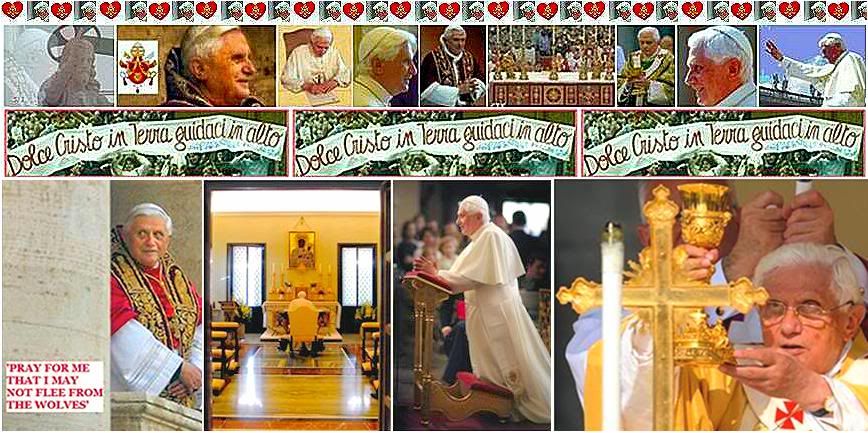

 Sunday, December 30, Octave of Christmas
Sunday, December 30, Octave of Christmas
FEAST OF THE HOLY FAMILY
 Nativity images, from left: Giotto, 1304; Van Der Weyden, 1448, Cranach the Elder, 1515; Lotto, 1523; Fasolo, 1526; Saraceni, 1610.
Nativity images, from left: Giotto, 1304; Van Der Weyden, 1448, Cranach the Elder, 1515; Lotto, 1523; Fasolo, 1526; Saraceni, 1610. Above, from left, the first three by Raphael, from 1504-1518, when he produced several Holy Family paintings; Michelangelo's round painting (tondo), 1504; El Greco, 1595 (he, too, did a number of HF paintings), and Rembrandt, 1630.
Popular devotion to the Holy Family peaked in Europe in the 17th-century, but it was not until 1921, under Pope Benedict XV, that the Feast of the Holy Family was included in the liturgical calendar of the Roman rite. At the time, it was celebrated on the first Sunday after the Epiphany, but in 1969, it was transferred to the first Sunday after Christmas (or on December 30th, if Christmas Day falls on a Sunday). As Benedict XVI said in his Angelus homily on the Feast of the Holy Family in 2010, it is the Holy Family at the Nativity that we remember today primarily. The Holy Father also spoke about the Holy Family in his last catechesis for 2011.
Above, from left, the first three by Raphael, from 1504-1518, when he produced several Holy Family paintings; Michelangelo's round painting (tondo), 1504; El Greco, 1595 (he, too, did a number of HF paintings), and Rembrandt, 1630.
Popular devotion to the Holy Family peaked in Europe in the 17th-century, but it was not until 1921, under Pope Benedict XV, that the Feast of the Holy Family was included in the liturgical calendar of the Roman rite. At the time, it was celebrated on the first Sunday after the Epiphany, but in 1969, it was transferred to the first Sunday after Christmas (or on December 30th, if Christmas Day falls on a Sunday). As Benedict XVI said in his Angelus homily on the Feast of the Holy Family in 2010, it is the Holy Family at the Nativity that we remember today primarily. The Holy Father also spoke about the Holy Family in his last catechesis for 2011.
Readings for the Mass of the Holy Family:
www.usccb.org/bible/readings/123012.cfm
AT THE VATICAN TODAY
Sunday Angelus - The Holy Father, reflecting on the Holy Family of Nazareth as a model for all families,
said parents must remember that they are neither friends nor masters of their children but custodians of
an incomparable gift from God, and prayed that all famillies may educate their children in goodness and faith.
12/31/12 Major post-script for an item I ought to have posted yesterday:
Italy's 'grande dame'
of science dies at age 103

ROME. Dec. 30 (AP) — Rita Levi-Montalcini, a biologist who conducted underground research in defiance of Fascist persecution and went on to win a Nobel Prize for helping unlock the mysteries of the cell, died at her home in Rome on Sunday. She was 103 and had worked well into her final years.
Rome Mayor Gianni Alemanno, announcing her death in a statement, called it a great loss "for all of humanity." He praised her as someone who represented "civic conscience, culture and the spirit of research of our time."
Italy's so-called "Lady of the Cells," a Jew who lived through anti-Semitic discrimination and the Nazi invasion, became one of her country's leading scientists and shared the Nobel medicine prize in 1986 with American biochemist Stanley Cohen for their groundbreaking research on an important body regulator, the nerve growth factor (NGF), carried out in the United States. Her research increased the understanding of many conditions, including tumors, developmental malformations, and senile dementia.
Italy honored Levi-Montalcini in 2001 by making her a senator-for-life.
A petite woman with upswept white hair, she kept an intensive work schedule well into old age. "At 100, I have a mind that is superior — thanks to experience — than when I was 20," she said in 2009.
"A beacon of life is extinguished" with her death, said a niece, Piera Levi-Montalcini, who is a city councilwoman in Turin. She told the Turin daily newspaper La Stampa that her aunt passed away peacefully "as if sleeping" after lunch. and that the scientist had kept up her research studies several hours a day "right up until the end."
Levi-Montalcini was born April 22, 1909, to a Jewish family in the northern city of Turin. At age 20 she overcame her father's objections that women should not study and obtained a degree in medicine and surgery from Turin University in 1936.
She studied under top anatomist Giuseppe Levi, whom she often credited for her own success and for that of two fellow students and close friends, Salvador Luria and Renato Dulbecco, who also became separate Nobel Prize winners. Levi and Levi-Montalcini were not related.
After graduating, Levi-Montalcini began working as a research assistant in neurobiology but lost her job in 1938 when Italy's Fascist regime passed laws barring Jews from universities and major professions.
Her family decided to stay in Italy and, as World War II neared, Levi-Montalcini created a makeshift lab in her bedroom where she began studying the development of chicken embryos, which would later lead to her major discovery of mechanisms that regulate growth of cells and organs.
With eggs becoming a rarity due to the war, the young scientist biked around the countryside to buy them from farmers. She was soon joined in her secret research by Levi, her university mentor, who was also Jewish and who became her assistant.
"She worked in primitive conditions," Italian astrophysicist Margherita Hack told Sky TG24 TV in a tribute to her fellow scientist. "She is really someone to be admired."
Italy's premier, Mario Monti, paid tribute to Levi-Montalcini's "charismatic and tenacious" character and for her lifelong battle to "defend the battles in which she believed."
Only a few months ago, she helped sponsor an appeal to the government for more attention of fund-strapped young scientists in Italy.
Vatican spokesman the Rev. Federico Lombardi praised Levi-Montalcini's civil and moral efforts, saying she was an "inspiring" example for Italy and the world, the ANSA news agency said. [She also became the first woman scientist to be elected to the Pontifical Academy of Sciences.]
An Italian scientist, who worked for some 40 years with Levi-Montalcini, including in the United States, said the work the Nobel laureate did on nerve growth factor was continuing. The protein assists portions of the central nervous system that have been damaged by disease or injury.
"Over the years, this field of investigation has become ever more important in the world of neuroscience," Pietro Calissano was quoted by ANSA as saying. Calissano began studying under Levi-Montalcini in 1965 and recalled her ability to relate to students on a very human level, with none of the elite airs that often characterize Italian professors.
"I remember we were in a closet with cell cultures when she offered me a fellowship," Calissano said. He added that research building on Levi-Montalcini's pioneering achievements continues. "We are working on a possible application in the treatment of Alzheimer's," he added.
The 1943 German invasion of Italy forced the Levi-Montalcini family to flee to Florence and live underground. After the Allies liberated the city, she worked as a doctor at a center for refugees.
In 1947 Levi-Montalcini was invited to the United States, where she remained for more than 20 years, which she called "the happiest and most productive" of her life. She held dual Italian-U.S. citizenship.
During her research at Washington University in St. Louis, Missouri, she discovered nerve growth factor, the first substance known to regulate the growth of cells. She showed that when tumors from mice were transplanted to chicken embryos they induced rapid growth of the embryonic nervous system. She concluded that the tumor released a nerve growth-promoting factor that affected certain types of cells.
The research increased the understanding of many conditions, including tumors, developmental malformations, and senile dementia. It also led to the discovery by Stanley Cohen of another substance, epidermal growth factor, which stimulates the proliferation of epithelial cells. The two shared the Nobel Prize for medicine in 1986.
Levi-Montalcini returned to Italy to become the director of the laboratory of cell biology of the National Council of Scientific Research in Rome in 1969.
After retiring in the late 1970s, she continued to work as a guest professor and wrote several books to popularize science. She created the Levi-Montalcini Foundation to grant scholarships and promote educational programs worldwide, particularly for women in Africa.
In 2001 Levi-Montalcini was made a senator for life, one of the country's highest honors.
She then became active in Parliament, especially between 2006 and 2008, when she and other life senators would cast their votes to back the thin majority of center-left Premier Romano Prodi.
Levi-Montalcini had no children and never married, fearing such ties would undercut her independence.
"I never had any hesitation or regrets in this sense," she said in a 2006 interview. "My life has been enriched by excellent human relations, work and interests. I have never felt lonely."
Italian mathematician Piergiorgio Odifreddi said he was always struck by the contrast of this "petite, frail woman and the power of her mind." He recalled comments that Levi-Montalcini made when she turned 100. She mentioned that she would sleep no more than two or three hours a night because "I have no time to lose," Odifreddi told Sky TG24.
What an amazing woman and an amazing life! I cannot think of any woman scientist whose career has been so remarkable since Marie Curie. May there be more of them!
[Modificato da TERESA BENEDETTA 01/01/2013 03:40] |
| |
|
| |
 30/12/2012 19:27 30/12/2012 19:27 |
|
| | | OFFLINE | | Post: 26.002
Post: 8.494 | Registrato il: 28/08/2005
Registrato il: 20/01/2009 | Administratore | Utente Master | |
|

 ANGELUS TODAY
ANGELUS TODAY
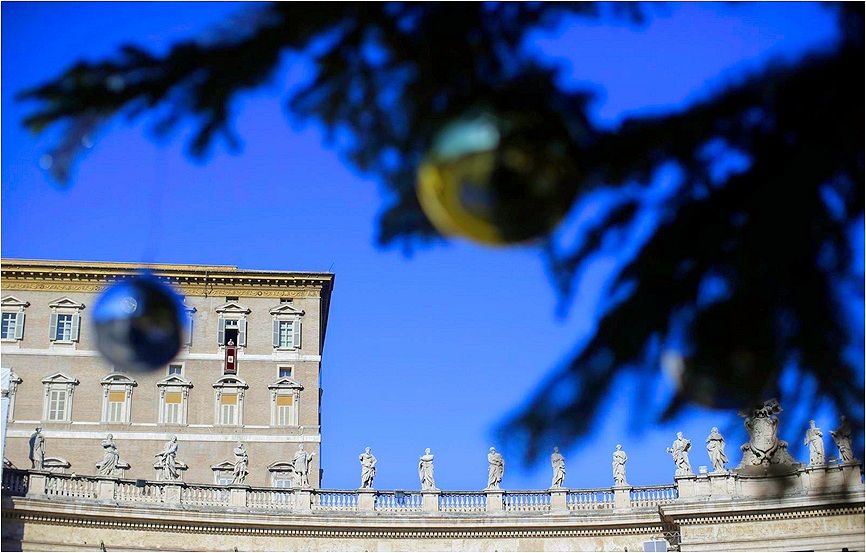
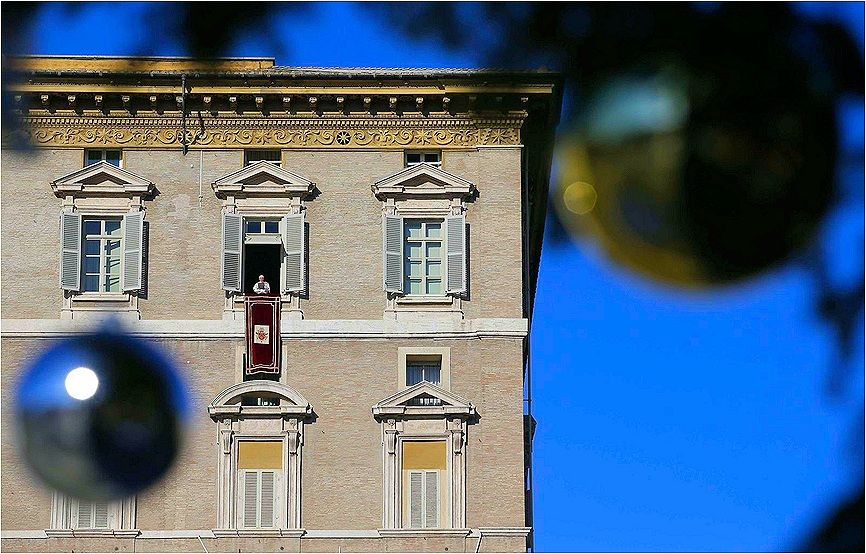
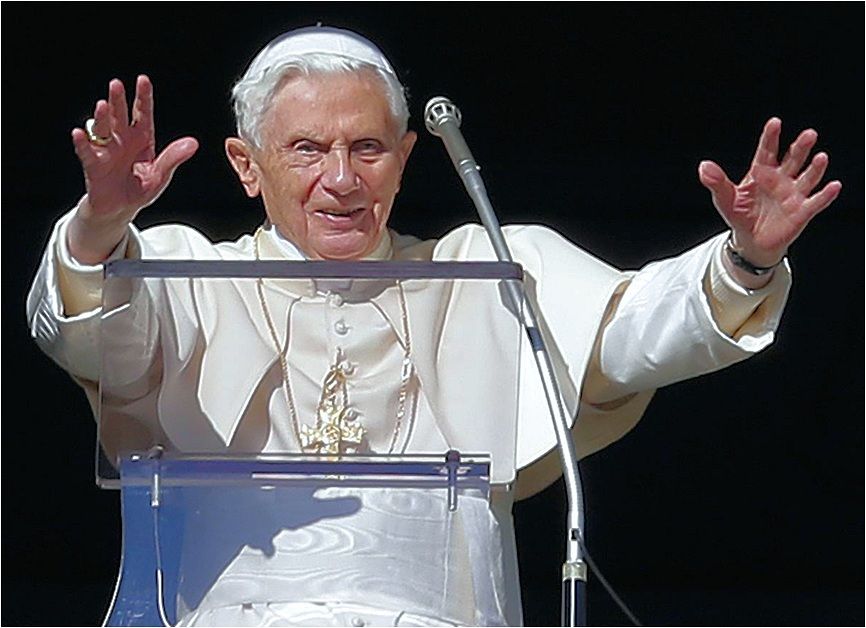
This Sunday, as tens of thousands thronged St Peter’s Square,
Pope Benedict XVI marked the Feast of the Holy Family today with a prayer for all the families of the world - that parents “seriously concern” themselves with their children’s education, that they realise that every child is “an incomparable gift from God”, and that they are neither “friends nor masters” of their children’s lives but “guardians” of this gift.
In English, he said:
Today the Church throughout the world celebrates the Feast of the Holy Family. May Jesus, Mary and Joseph bring greater love, unity and harmony to all Christian families, that they in their turn may be a firm example to the communities in which they live. May God bless you and your dear families!
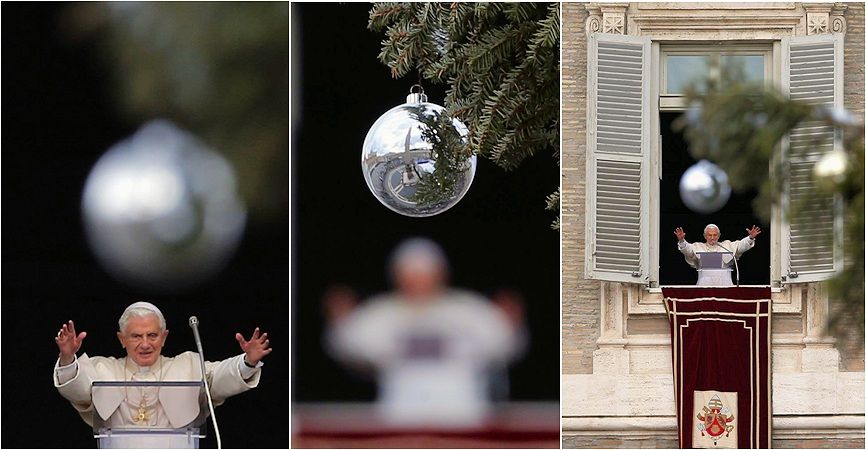
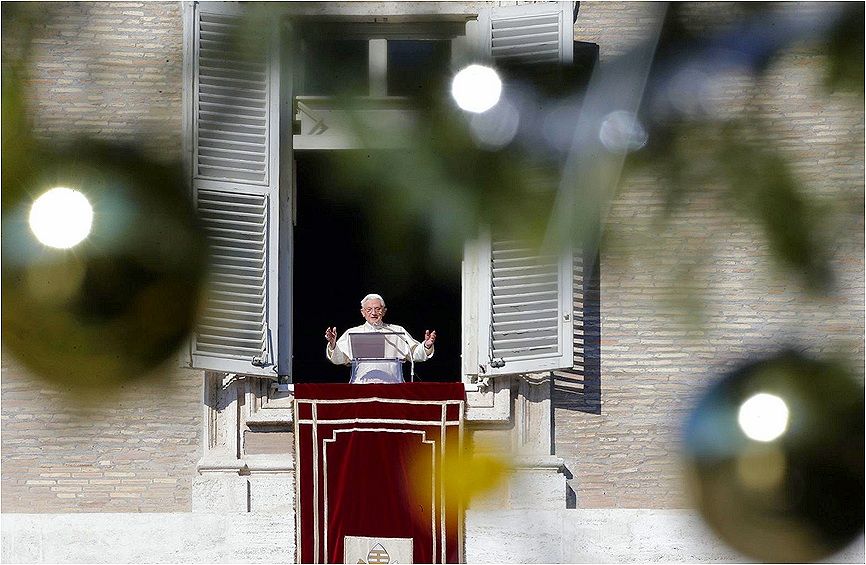
Here is a full translation of the Pope's reflection today:
Dear brothers and sisters,
Today is the feast of the Holy Family of Nazareth. In the liturgy, the passage from the Gospel of Luke presents us the Virgin Mary and St. Joseph, who, faithful to tradition, went to Jerusalem for the Passover together with the 12-year-old Jesus.
The first time Jesus entered the Temple pf the Lord was 40 days after his birth, when his parents offered for him “a pair of turtledoves or two young pigeons” (Lk 2,24),, namely, a sacrifice such as that which the poor offered.
"Luke, whose entire Gospel is pervaded by a theology of the poor and of poverty, makes us understand... that the family of Jesus was among the poor of Israel; he makes us understand that it was precisely among them that the promise [to Israel] could mature to fulfillment" (L'infanzia di Gesu, 96).
On this day, Jesus was back in the Temple, but this time in a different role, which involves him directly. He was fulfilling, with Mary and Joseph, the pilgrimage to Jerusalem as prescribed by the Law (cfr Ex 23,17; 34,23ff), even if he was not yet 13 - a sign of the profound religiosity of the Holy Family. [Thirteen is the age when Jewish boys are considered accountable for their actions under the Law.]
But when his parents went back to Nazareth, something unexpected happened. He, without telling them, remained in the city. For three days, Mary and Joseph looked for him and found him in the Temple, speaking to the teachers of the Law (cfr Lc 2,46-47); and when they asked him for an explanation, Jesus responded that they ought not to have wondered, because he was where he ought to be, in his house, with the Father who is God (cfr L’infanzia di Gesù, 143).
"He professed to be in the temple of his Father", wrote Origen, "the Father whom he revealed to us and of whom he said he was the Son" (Homily on the Gospel of Luke, 18,5).
The concern of Mary and Joseph for Jesus is that of every parent who educates his child, introduces him to life and to understanding reality. That is why today it is our duty to say a special prayer to the Lord for all the families of the world.
Imitating the Holy Family of Nazareth, parents must be seriously concerned with the rearing and education of their own children, so that they may grow up to be responsible and honest citizens, without ever forgetting that faith is a precious gift to nourish in their children through their own personal example.
At the same time, let us pray that every child is welcomed as a gift of God, and may be sustained in the love of his father and mother, in order to grow up, like Jesus "wisdom, age and grace before God and men" (Lk 2,52).
May the love, the faithfulness and the dedication of Mary and Joseph be an example for all Christian spouses, who are not the friends nor masters of their children's lives, but guardians of this incomparable gift of God.
May the silence of Joseph as a 'just man' (cfr Mt 1,19), and the silence of Mary, who kept everything in her heart (cfr Lk 2,51), allow us to enter into the mystery full of faith and humanity of the Holy Family.
I wish for all Christian families to live in the presence of God with the same love and the same joy as the family of Jesus, Mary and Joseph.
  |
| |
 30/12/2012 20:10 30/12/2012 20:10 |
|
| | | OFFLINE | | Post: 26.003
Post: 8.494 | Registrato il: 28/08/2005
Registrato il: 20/01/2009 | Administratore | Utente Master | |
|
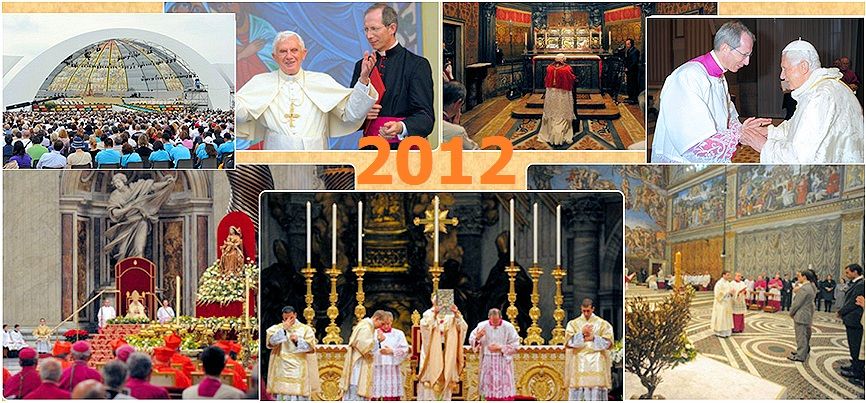 A partial view of 2012
A partial view of 2012
for the Pontificate
and the Holy See

The Vatican Information Service has compiled the following highlights of the activities of Pope Benedict XVI and the Holy See in 2012, as well as some (not all) notable deaths in the Church hierarchy.
[I wish I could vouch for the completeness of the list, but I can't, seeing as it does not contain, as I will later note, the Pope's observance of Assumption and the Immaculate Conception. A more careful check will doubtless reveal more omissions, unfortunately. Already, one sees the omission in January of the Pope's liturgies on the Epiphany and the Baptism of Christ, not to mention the Vespers for Christian Unity! In fact, the VIS list generally makes short shrift of the Pope's liturgical celebrations, as if they did not consider them 'highlights' of his activities at all, which is most strange, to say the least! Fr. Lombardi nor his subordinates never noticed this at all???? Yet another glaring and most unfortunate instance of the utter lack of editorial supervision of what is being done in the Vatican Press Office.]
JANUARY
1: Benedict XVI presides at a Eucharistic celebration for the Solemnity of Mary Mother of God, and for the forty-third World Day of Peace which has as its theme this year: "Educating Young People in Justice and Peace".
3: Publication of the Holy Father's Message for the World Day of the Sick, to be held on 11 February, Feast of Our Lady of Lourdes. The message, dated from the Vatican on 20 November 2011, Solemnity of our Lord Jesus Christ Universal King, is entitled: "Stand up and go; your faith has saved you".
14: The Holy Father receives in audience Mario Monti, prime minister of the Republic of Italy.
19: The Holy Father receives a group of prelates from the United States Conference of Catholic Bishops (Regions 4 and 6), at the end of their "ad limina" visit.
20: The Pontifical Council for the Laity publishes a decree approving the celebrations contained in the Catechetical Directory of the Neo-Catechumenal Way. The decree, dated 8 January, Feast of the Baptism of the Lord, bears the signatures of Cardinal Stanislaw Rylko and Bishop Josef Clemens, respectively president and secretary of the council.
24: Presentation of Benedict XVI's Message for the forty-sixth World Day of Social Communications, entitled: "Silence and Word: Path of Evangelisation".
25: The Holy See, acting also in the name and on behalf of Vatican City State, adheres to the International Convention for the Suppression of the Financing of Terrorism (New York, 1999) and to the United Nations Convention Against Transnational Organised Crime (Palermo, 2000). On the same date the Holy See ratifies, likewise in the name and on behalf of Vatican City State, the United Nations Convention against Illicit Traffic in Narcotic Drugs and Psychotropic Substances (Vienna, 1988), which it had already signed in the year in which it was adopted.
31: Cardinal Anthony Bevilacqua, former archbishop of Philadelphia, U.S.A., dies at the age of 88.
FEBRUARY
6: The Pope receives Laurence Argimon-Pistre, head of the delegation of the European Union, for the presentation of her Letters of Credence.
7: International symposium entitled "Towards Healing and Renewal" bringing together bishops and religious superiors from all over the world with the aim of relaunching the Church's commitment to protecting minors and vulnerable people from child abuse.
7: Publication of the 2012 Lenten Message of the Holy Father Benedict XVI, the title of which is taken from the Letter to the Hebrews: "Let us be concerned for each other, to stir a response in love and good works".
13: Publication of the Pope's Message for the forth-ninth World Day of Prayer for Vocations. The Day is due to be celebrated on 29 April on the theme: "Vocations, the Gift of the Love of God".
14: Official visit to the Vatican of a delegation of ministers from the United Kingdom to mark the thirtieth anniversary of the establishment of full diplomatic relations with the Holy See.
16: The Pope receives Budiarman Barar, the new ambassador of Indonesia to the Holy See, for the presentation of his Letters of Credence.
16: The Pope receives Daniel Edgardo Ramada Piendibene, the new ambassador of Uruguay to the Holy See, for the presentation of his Letters of Credence.
18: Benedict XVI celebrates the fourth ordinary public consistory of his pontificate, during which he creates twenty-two new cardinals.
24: The Holy Father receives in audience His Majesty Siaosi Tupou V, King of Tonga.
29: Inauguration of an exhibition entitled "'Lux in Arcana' - the Vatican Secret Archives unveiled", organised to mark the fourth centenary of the foundation of the Archives.
MARCH
4: Benedict XVI visits the Roman parish of San Giovanni Battista de La Salle in the Torrino district.
9: Cardinal Jose T. Sanchez, prefect emeritus of the Congregation for the Clergy, dies at the age of 91.
9: The Holy Father receives a group of prelates from the United States Conference of Catholic Bishops, at the end of their "ad limina" visit.
10: The Holy Father presides at Vespers in the Roman monastery of San Gregorio al Celio, to mark the visit to Rome of His Grace Rowan Williams, archbishop of Canterbury and primate of the Anglican Communion.
14: Presentation, in the German embassy to the Holy See, of a work by Joseph Ratzinger: "The People and the House of God in Augustine's Doctrine of the Church". The book, the Pope's doctoral thesis from 1953, is part of a series of sixteen volumes which aims to bring together all Joseph Ratzinger's theological works up to the time of his election to the papal throne in 2005.
16: The Congregation for the Doctrine of the Faith opens a new domain within the official website of the Holy See, to facilitate the consultation of its documents which, having the express approbation of the Holy Father, participate in his ordinary Magisterium as Peter's Successor.
23-28: The Holy Father makes an apostolic trip to Mexico and Cuba.
APRIL
7: His Beatitude Cardinal Ignace Moussa I Daoud, prefect emeritus of the Congregation for Oriental Churches and patriarch emeritus of Antioch of the Syrians, dies in Rome at the age of 82.
10: Cardinal Luis Aponte Martinez, archbishop emeritus of San Juan de Puerto Rico, dies at the age of 89.
14: Benedict XVI sends a message to Bishop Stephan Ackermann of Trier, Germany, for the fifth centenary of the first public display of the "Heiliger Rock", said to be the Holy Robe which Jesus wore before His crucifixion.
19: On this seventh anniversary of the election of the Holy Father Benedict XVI, the new www.vatican.va widget becomes available to users of the Internet.
MAY
1: Benedict XVI visits Rome's Sacred Heart Catholic University to mark the fiftieth anniversary of the "Agostino Gemelli" Faculty of Medicine and Surgery.
4: The Pope receives five new non resident ambassadors to the Holy See for the presentation of thier Letters of Credence: Teshome Toga Chanaka of Ethiopia, David Cooney of Ireland, Naivakarurubalavu Solo Mara of the Republic of Fiji, Viguen Tchitetchian of Armenia and Dato' Ho May Young, the first ambassador of Malaysia to the Holy See.
5: The Holy Father receives a group of prelates from the United States Conference of Catholic Bishops (Regions 10 to 13) at the end of their "ad limina" visit.
5: The Holy Father receives in audience Bamir Topi, president of the Republic of Albania.
13: Benedict XVI makes a pastoral visit to the Italian region of Abruzzo.
18: The Holy Father receives a final group from the United States Conference of Catholic Bishops, whose prelates have been travelling to Rome over the past six months on their quinquennial "ad limina Apostolorum" visits.
24: The Holy Father receives participants in the sixty-fourth general assembly of the Italian Episcopal Conference.
24: The Pope receives in separate audiences Rosen Plevneliev, president of the Republic of Bulgaria, and Nikola Gruevski, prime minister of the former Yugoslav Republic of Macedonia, each accompanied by a delegation, for the commemoration of the Feast of Sts. Cyril and Methodius.
25: The Holy Father receives in audience Petr Necas, prime minister of the Czech Republic.
27: After celebrating Mass for the Solemnity of Pentecost, the Holy Father announces that on 7 October he will proclaim St. John of Avila and St. Hildegard of Bingen as Doctors of the Universal Church.
28: The Holy Father receives in audience Laura Chinchilla Miranda, president of Costa Rica.
JUNE
1-3: The Pope makes a pastoral visit to the Italian archdiocese of Milan to participate in the seventh World Meeting of Families. Following the closing Mass he announces that the next World Meeting of Families will take place in Philadelphia, U.S.A., in 2015.
4: Cardinal Rodolfo Ignacio Quezada Toruno, archbishop emeritus of Guatemala, Guatemala, dies at the age of 80.
8: The Holy Father receives in audience Mahinda Rajapaksa, president of the Democratic Socialist Republic of Sri Lanka.
9: Benedict XVI receives in audience prelates from the Catholic Bishops' Conference of Papua New Guinea and Solomon Islands, at the end of their "ad limina" visit.
15: The Holy Father receives in audience Nassir Abdulaziz al-Nasser, president of the sixty-sixth session of the General Assembly of the United Nations.
16: The International Theological Commission updates its webpage. The page is to be found on the Vatican website (www.vatican.va) under the section dedicated to the Congregation for the Doctrine of the Faith.
17: A video message from Benedict XVI is transmitted at the end of the closing Mass of the fiftieth International Eucharistic Congress, which was held in Dublin, Ireland, from 10 to 17 June on the theme: "The Eucharist. Communion with Christ and with One Another".
20: The Holy Father receives in audience Valdis Dombrovskis, prime minister of the Republic of Latvia.
21: The Holy Father receives in audience Filip Vujanovic, president of Montenegro.
22: The Holy Father receives a first group of prelates from the Episcopal Conference of Colombia, at the end of their "ad limina" visit.
25: The American journalist Gregory Burke, currently Rome correspondent for Fox News, is designated for the post of "communications advisor" to the Secretariat of State.
26: Benedict XVI visits areas in the Italian region of Emilia Romagna which were badly affected by a series of earthquakes.
JULY
9: Benedict XVI makes a private visit to to the "Ad Gentes" Centre of the Verbite Missionaries in Nemi, a village near Castelgandolfo.
9: Cardinal Eugenio Araujo Sales, archbishop emeritus of Sao Sebastiao do Rio de Janeiro, Brazil, dies at the age of 91.
10: The Holy Father makes a pastoral visit to the Italian diocese of Frascati, near Rome.
16: Announcement of the theme chosen by the Holy Father for the forty-sixth World Day of Peace, which will fall on 1 January 2013: "Blessed are the peacemakers".
25: Publication by the Pontifical Council for the Pastoral Care of Migrants and Itinerant Peoples of the Message for World Tourism Day. The theme for this year's Day, which falls on 27 September, is: "Tourism and Sustainable Energy: Powering Sustainable Development".
SEPTEMBER
4: Message from the Holy Father for the funeral of Cardinal Carlo Maria Martini, S.J., archbishop emeritus of Milan, Italy, who died on 31 August at the age of 85.
10: The Holy Father receives the second group of bishops from the Episcopal Conference of Colombia, at the end of their five-yearly "ad limina" visit.
14-16: Apostolic Visit to Lebanon.
14: Publication of Post-Synodal Apostolic Exhortation of the Special Assembly for the Middle East of the Synod of Bishops, "Ecclesia in Medio Oriente" in Beirut, Lebanon.
18: The Holy Father appoints the Synod Fathers for the Thirteenth Ordinary General Assembly of the Synod of Bishops, which takes place from 7 to 28 October on the theme "The new evangelisation for the transmission of the Christian faith".
20: Cardinal Fortunato Baldelli, penitentiary major emeritus of the Apostolic Penitentiary, dies at the age of 77.
21: The Holy Father receives prelates from the Episcopal Conference of France on their "ad limina" visit.
25: "God, the unknown. Dialogue between believers and non-believers" is the theme of the "Atrium of St. Francis", an initiative organised by the Pontifical Council for Culture, the Holy Convent of Assisi and the "Oicos Riflessioni" Association.
OCTOBER
4: Pastoral visit to Loreto, Italy, to commemorate the fiftieth anniversary of the Blessed Pope John XXIII's pilgrimage to the Marian city.
5: By a decree made public today and signed by Cardinal Manuel Monteiro de Castro and Bishop Krzysztof Nykiel, respectively penitentiary major and regent of the Apostolic Penitentiary, Benedict XVI grants faithful Plenary Indulgence for the occasion of the Year of Faith. The indulgence will be valid from the opening of the Year on 11 October 2012 until its end on 24 November 2013.
7-28: Thirteenth Ordinary General Assembly of the Synod of Bishops, on the theme: "The New Evangelisation for the Transmission of the Christian faith".
8: Benedict XVI proclaims St. Juan de Avila and St. Hildegard von Bingen as Doctors of the Universal Church and presides at the Eucharistic celebration during which he inaugurates the thirteenth Ordinary General Assembly of the Synod of Bishops.
8: Cardinal Lucian Muresan, major archbishop of Fagaras and Alba Julia of the Romanians, Romania, takes possession of the title of Sant'Atanasio, Via del Babuino 149, Rome.
10: In the general audiences, an Arabic speakerfor the first time is added to the speakers providing a summary of the papal catechesis in various different languages.
11: Beginning of the Year of Faith.
14: Cardinal Timothy Michael Dolan, archbishop of New York, takes possession of the title of Nostra Signora di Guadalupe a Monte Mario, Piazza Nostra Signora di Guadalupe 12, Rome.
14: Cardinal George Alencherry, major archbishop of Ernakulam Angamaly of the Syro-Malabars, takes possession of the title of San Bernardo alle Terme, Via Torino 94, Rome.
18: Archbishop Dominique Mamberti, secretary for Relations with States, receives the Letters of Credence of Carl-Henri Guiteau, ambassador of Haiti to the Holy See.
20: Cardinal Julien Ries takes possession of the diaconate of Sant’Antonio di Padova a Circonvallazione Appia, Circonvallazione Appia 150, Rome.
20: The "Ratzinger Prize" for 2012 is conferred upon historian and philosopher Remi Brague, and scholar of patrology and theology Fr. Brian Edward Daley S.J.
21: Papal Mass for the canonisation of seven new saints: Jacques Berthieu, martyr and priest of the Society of Jesus (1838-1896); Pedro Calungsod, lay catechist and martyr (1654-1672); Giovanni Battista Piamarta, priest and founder of the Congregation of the Holy Family of Nazareth and of the Congregation of the Humble Sister Servants of the Lord (1841-1913); Maria del Carmen (born Maria Salles y Barangueras), foundress of the Conceptionist Missionary Sisters of Teaching (1848-1911); Marianne Cope, nee Barbara, religious of the Sisters of the Third Order of St. Francis in Syracuse U.S.A. (1838-1918); Kateri Tekakwitha, laywoman (1656-1680), and Anna Schaeffer, laywoman (1882-1925).
23: Cardinal Thomas Christopher Collins, archbishop of Toronto, Canada, takes possession of the title of San Patrizio, Via Boncompagni 31, Rome.
25: Cardinal Edwin Frederick O'Brien, grand master of the Equestrian Order of the Knights of the Holy Sepulchre of Jerusalem, takes possession of the diaconate of San Sebastiano al Palatino, Via di San Bonaventura, Rome.
29: Pope's Message for the ninety-ninth World Day of Migrants and Refugees (13 January 2013) on the theme: "Migrations: Pilgrimage of Faith and Hope".
31: The Holy Father presides at the first Vespers of the Solemnity of All Saints in the Sistine Chapel to commemorate the five-hundredth anniversary of the unveiling of the ceiling frescoes painted by Michelangelo between 1508 and 1512.
NOVEMBER
10: By the Motu Proprio "Latina lingua" Benedict XVI establishes the Pontifical Academy for Latin, under the auspices of the Pontifical Council for Culture.
12: The Holy Father visits the Sant Egidio Community's "Viva gli Anziani" rest home for the elderly in Rome, to mark the occasion of the European Year for Active Ageing and Solidarity Among Generations.
16: Holy Father's Message for the 28th World Youth Day 2013, which will take place in Rio de Janeiro, Brazil, in July 2013, with the title "Go and make disciples of all nations!"
17: Pope's address to prelates from the Episcopal Conference of France on their "ad limina" visit.
20: Presentation to the international press of the book "The Infancy Narratives", third volume of Joseph Ratzinger-Benedict XVI's "Jesus of Nazareth" trilogy.
24: Ordinary Public Consistory for the creation of six new cardinals.
30: Pope's address to the third group of prelates from the Episcopal Conference of France on their "ad limina" visit.
DECEMBER
1: Publication of Benedict XVI's Apostolic Letter issued "motu proprio" on "The Service of Charity", dated 11 November 2012.
8: [I can't believe VIS omitted the Holy Father's traditional tribute to the Immacolata in Rome's Piazza Spagna on the Solemnity of the Immaculate Conception. But then I looked back and neither does their list included the Pope's celebration of the Mass of the Assumption on August 15 in Castel Gandolfo!.]
9: Inauguration of the International Congress "Ecclesia in America" on the Church in the American continent with a Eucharistic celebration in St. Peter's Basilica.
12: The Pope enters Twitter with a blessing.
13: Audience with six new ambassadors and non-resident ambassadors accredited to the Holy See: Bizwayo Newton Nkunika of Zambia, Chalermpol Thanchitt of Thailand, Ravinatha Pandukabhaya Aryasinha of Sri Lanka, Wafic Rida Said of St. Vincent and the Grenadines, Aminatou Batoure Gaoh of Niger and Ibrahima Sory Sow of Guinea.
16: Third Sunday of Advent "Gaudete", pastoral visit to the Roman parish of San Patrizio al Colle Prenestino, celebration of the Eucharist at 9.30 a.m.
17: The Holy Father receives in audience Mahmoud Abbas, president of the Palestinian Authority.
17: The Holy See and the Republic of China complete the necessary procedures to allow the entry in force of the Agreement between the Congregation for Catholic Education and the Ministry of Education of the Republic of China on collaboration in the field of higher education and on the recognition of studies, qualifications, diplomas and degrees.
22: Benedict XVI grants pardon to Paolo Gabriele. [Since neither Vatileaks or Gabriele was ever mentioned earlier in the list, how weird is it that VIS chooses to highlight the pardon to a crime it has not even reported!]
[The list obviously does not include the papal liturgies and events after December 22.]
[Modificato da TERESA BENEDETTA 31/12/2012 08:26] |
| |
 31/12/2012 10:52 31/12/2012 10:52 |
|
| | | OFFLINE | | Post: 26.004
Post: 8.496 | Registrato il: 28/08/2005
Registrato il: 20/01/2009 | Administratore | Utente Master | |
|
 A new US comic book on
A new US comic book on
the life of Benedict XVI
Lella posted a link to a Korazym item on a US comic book about the Pope, HABEMUS PAPAM: BENEDICT XVI, which led me to seek out the comic book itself online, remembering that there was one such comic book with the same title published for WYD in Madrid in 2011. Indeed, the new one turns out to be an 'expanded' version of the WYD comic book (or manga, to use the trendy Japanese term). Here is the blurb for it - it's available on amazon.com.
NB: The comic-book publishers should have known that Joseph Ratzinger has always spelled his first name (as did his father) spelled with a '-ph', not an '-f'.
Habemus Papam! Pope Benedict XVI (Manga Hero, 2012) is the story of an extraordinary young man who thought he was ordinary.
Young Josef Ratzinger faces a number of challenges growing up in German Bavaria: all he wants to do is learn, but the Nazis keep closing down his schools. His father, Captain Ratzinger, a retired police officer, has been trying to stay one step ahead of the Nazis, but as Josef grows older, Germany moves towards war, and every German youth must serve in the army Hitler has taken over.
Little does Josef realize that the plan God has for him goes beyond books and the academy - and even beyond Germany!
This graphic novel about the life of Pope Benedict XVI is an expanded version of Gabrielle Gniewek's book that was officially published for World Youth Day 2011 in Madrid, Spain, and distributed to 300,000 people. Also included is a nine page appendix with fun facts about the Holy Father, his vehicles, and the Swiss Guards.
Here's the WYD Madrid edition, with illustrator Jonathan Lin:
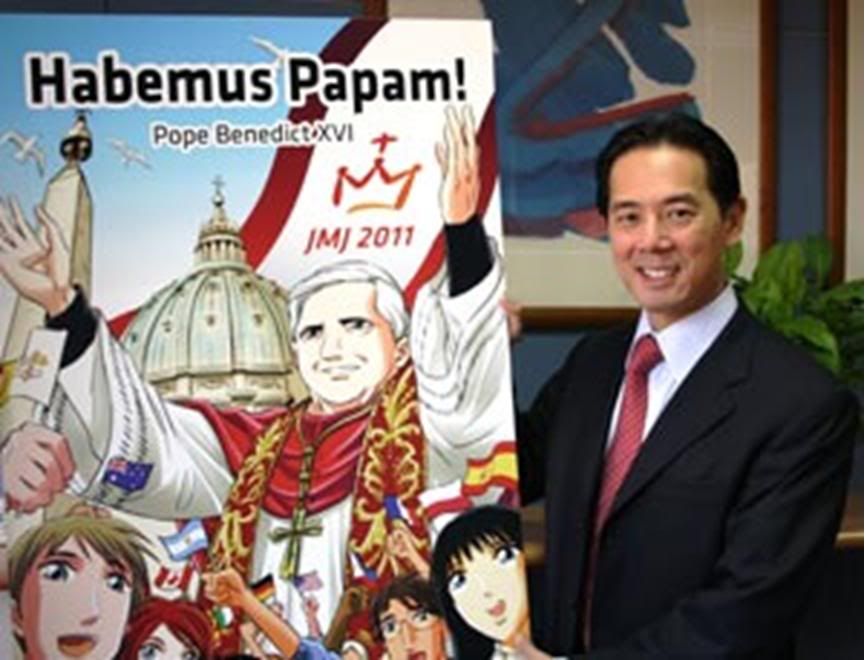
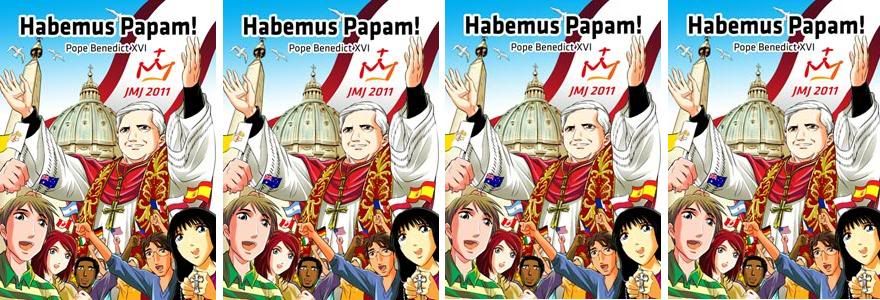 Here are some pages from the new comic book made available on the Amazon site - sorry, they are from thumbnails, so the print is not readable:
Here are some pages from the new comic book made available on the Amazon site - sorry, they are from thumbnails, so the print is not readable:
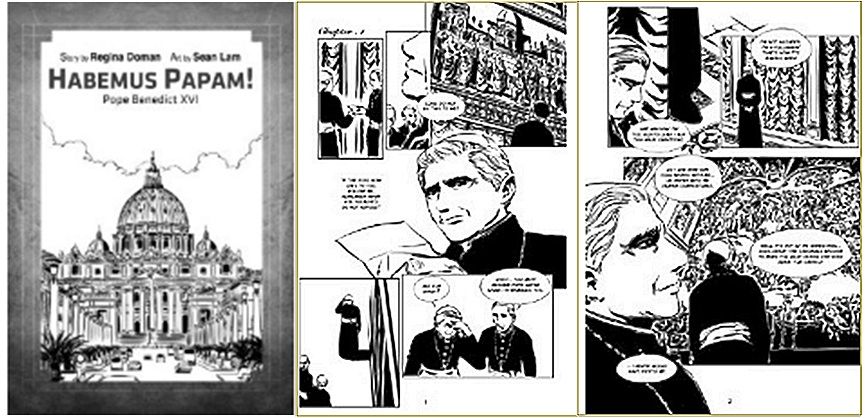
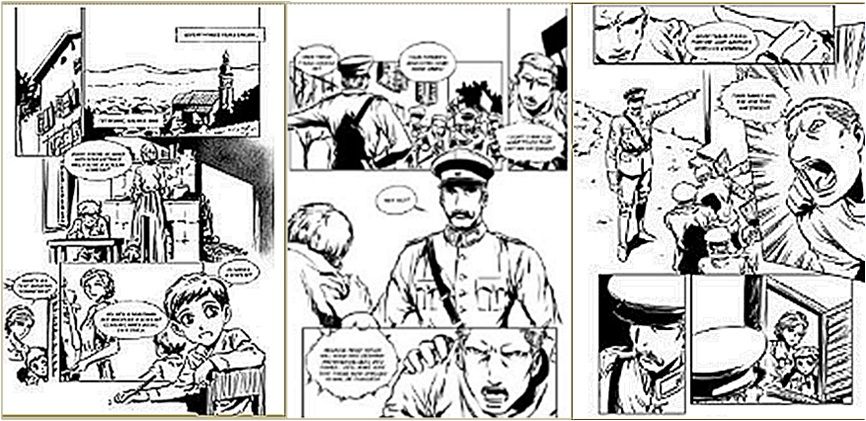
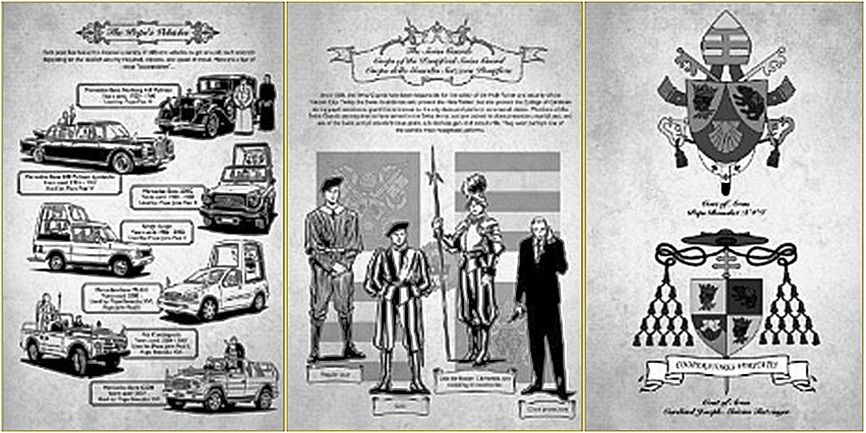 Obviously, the illustrator needs lessons from Ann Kissane Engelhart or Natalia Tsarkova on how to draw the face of Benedict XVI!(Quibble: Why is the entire
Obviously, the illustrator needs lessons from Ann Kissane Engelhart or Natalia Tsarkova on how to draw the face of Benedict XVI!(Quibble: Why is the entire
comic book not in color? B&W these days seems so passe. Surely there must be a program to colorize the sketches if they were not executed in color, to begin with.
Commentary about the new comic book makes much of the fact that Benedict XVI - with his previous media incarnations as the Panzerkardinal and God's
Rottweiler - was an unlikely comic-book hero, but since when have extraordinary people been unlikely comic-book heroes? In the religious genre, Bible
stories, the life of Jesus, and lives of the saints have always been inspirational sources of comic books for children. In the late 1950s and early 1960s, the United
States Information Service (to whose libraries I owe a great part of the books I read as a child and pre-teen), published comic books about life behind the Iron
Curtain, and one of the most memorable for me was the story of the Hungarian Cardinal Josef Mindszenty.
In 1983, Marvel Comics published a comic book on the life of John Paul II up to the assassination attempt in 1981.
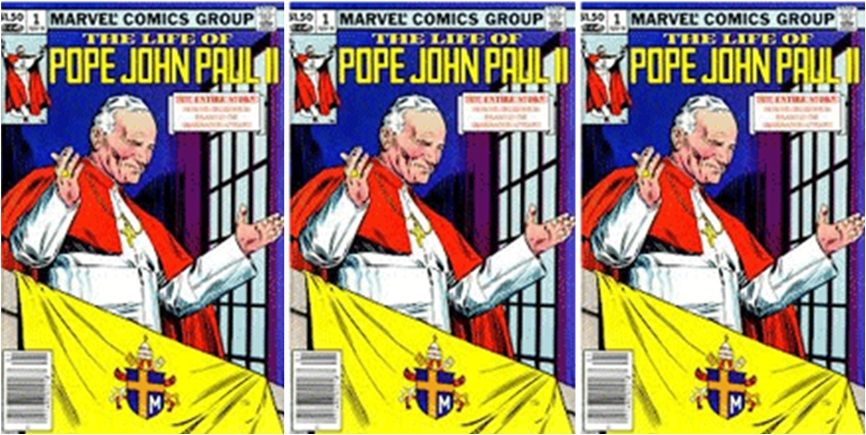
P.S. Beatrice on her site

recalls that back in 2005, she came upon a French comic book (or BD, for 'bande-desinee', comic strip) published to introduce
the new Pope to young readers shortly after his election. She came upon it by chance in the bookstore of the Basilica in
Montmartre, but that it is still available today at FNAC (the large French bookstore chain).
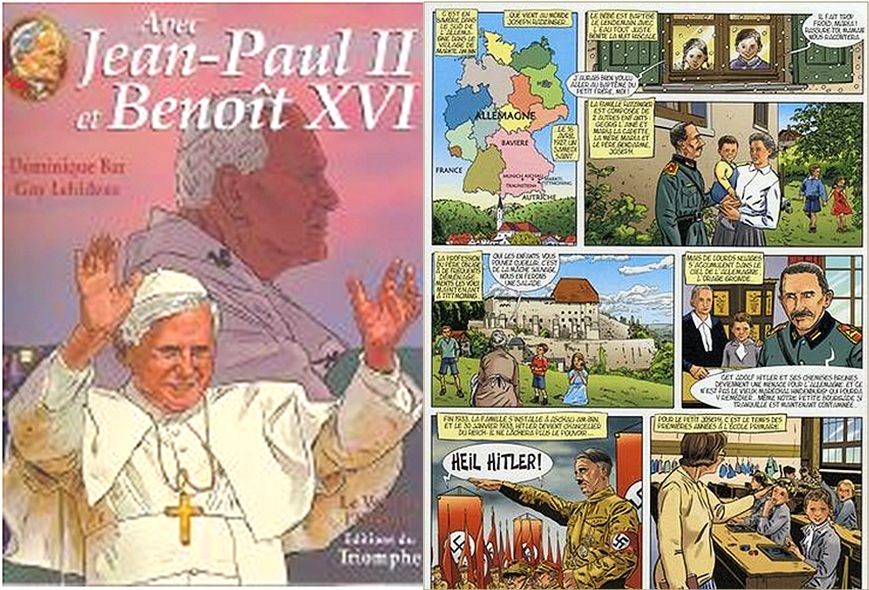
The graphic quality is decidedly superior to the work of the two manga artists responsible for the WYD and US editions, who I am sure did their best. However,
memo to comicbook artists: The medium is not an excuse passable or middling work, i.e., a comic book deserves as much care and attention as any other medium...
Yesterday, Photobucket revised its entire system overnight, and it took me some time to figure out how to use it,
so I will be slower than usual in posting new photos...
[Modificato da TERESA BENEDETTA 31/12/2012 16:53] |
| |
 31/12/2012 18:11 31/12/2012 18:11 |
|
| | | OFFLINE | | Post: 26.005
Post: 8.497 | Registrato il: 28/08/2005
Registrato il: 20/01/2009 | Administratore | Utente Master | |
|


 Monday, December 31, Seventh Day in the Christmas Octave
Monday, December 31, Seventh Day in the Christmas Octave
FEAST OF ST. SYLVESTER
 Extreme left illustration: Legends about Sylvester claim he fought dragons to save lives. Center panel depicts Emperor Constantine and Pope Sylvester I. Extreme left illustration: Legends about Sylvester claim he fought dragons to save lives. Center panel depicts Emperor Constantine and Pope Sylvester I.
ST. SYLVESTER (Pope Sylvester I, 314-335), Pope and Confessor
For one of the longest-serving Popes, who served during the reign of Emperor Constantine - the leader who was most crucial to the survival and propagation of Christianity in antiquity - very little is known about Sylvester as a person, not even when he was born, though it is known his father was a Roman native. During his Pontificate, the Church emerged from the catacombs; the great basilicas Saint John Lateran, Santa Croce in Gerusalemme, the first St. Peter's Basilica, and many cemeterial churches over the tombs of martyrs were built; and the Council of Nicaea was held [which dealt with the Arian heresy once and for all] - all of them made possible because of the Emperor. But it has been noted that only a great and wise Pope could have served for almost a quarter-century in these circumstances, helping to build the Church spiritually and materially in many fundamental ways. The so-called 'donation of Constantine' forged in the sixth century was supposed to have taken place in Sylvester's time: it claims that after Sylvester cured the emperor of leprosy, the latter was so grateful that he confirmed the Pope as primate among all bishops, abandoned Rome to Sylvester, and settled in Constantinople. This fiction was used successfully to support the later doctrine of papal supremacy under which papal auctoritas (authority) guided imperial potestas(power). Sylvester's feast falls on the seventh day of Christmas. In the German-speaking countries, New Year's Eve is popularly called Silvesterabend, and celebrations greeting the New Year are called St. Sylvester parties.
Readings for today's Mass:
www.usccb.org/bible/readings/123112.cfm
AT THE VATICAN TODAY
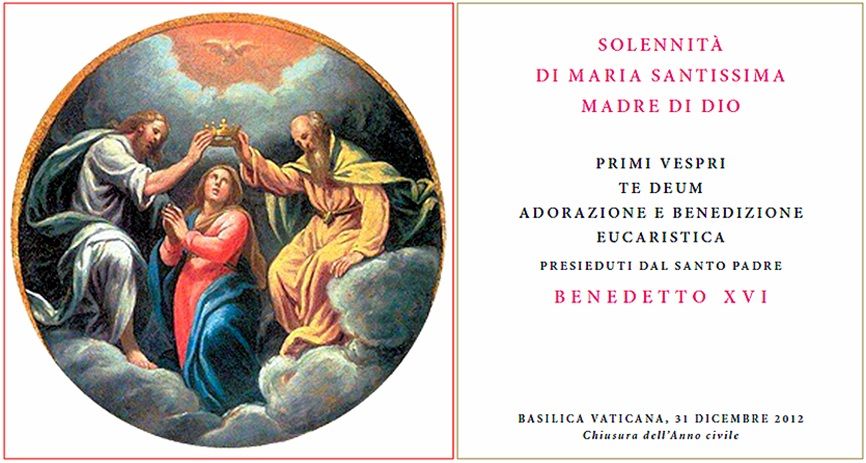
The Holy Father presides at Vespers on the eve of the Solemnity of Mary, Mother of God,
and a Te Deum in Thanksgiving for the past year.
AND IT'S ALREADY 2013 DOWN UNDER
 Fireworks in Sydney harbor welcomed in 2013 a few hours ago.
Fireworks in Sydney harbor welcomed in 2013 a few hours ago.
|
| |
 31/12/2012 20:02 31/12/2012 20:02 |
|
| | | OFFLINE | | Post: 26.006
Post: 8.498 | Registrato il: 28/08/2005
Registrato il: 20/01/2009 | Administratore | Utente Master | |
|
 What will it take to stop the continuing rampage-massacres carried out by the fundamentalist Muslim Boko Haram in Nigeria? They seem to simply strike at will - timing their killings on important Christian holidays - and apparently, the Nigerian government is unable to do anything about it. Recent events are hardly a good omen for the coming year... Of course, we pray for an end to hatred that takes the form of killing others, but let us also pray that we may understand the will of God through all the senseless violence that seems to be on the rise everywhere...
Militants slit throats
What will it take to stop the continuing rampage-massacres carried out by the fundamentalist Muslim Boko Haram in Nigeria? They seem to simply strike at will - timing their killings on important Christian holidays - and apparently, the Nigerian government is unable to do anything about it. Recent events are hardly a good omen for the coming year... Of course, we pray for an end to hatred that takes the form of killing others, but let us also pray that we may understand the will of God through all the senseless violence that seems to be on the rise everywhere...
Militants slit throats
of 15 Christians in Nigeria

Maiduguri, Nigeria, Dec. 31 (AP) - Gunmen suspected to belong to a radical Islamist sect attacked a village in northeast Nigeria, tying up men, women and children before slitting their throats, killing at least 15 in the troubled region's latest attack, witnesses said on Saturday.
The assault happened early on Friday morning in the village of Musari on the outskirts of Maiduguri, the city where the sect known as Boko Haram first launched its guerrilla campaign of shootings and car bombings against Nigeria's weak central government.
The gunmen shouted religious slogans and later ordered those there to be gathered up into a group, said Mshelia Inusa, a primary school teacher in the village.
"We heard some people chanting, 'God is great, God is great' amid sounds of banging on doors of houses at about 1 a.m.," the teacher said. "A voice was heard ordering people to be slaughtered and also voices of children were heard screaming."
CNN International has an updated wrap-up:
22 Christians killed in
three attacks in Nigeria
By Nana Karikari-apau

December 31, 2012
At least 22 people have been killed in three separate attacks in northeastern Nigeria since Friday, including 15 Christians shot Sunday inside a church, according to officials.
The violence began early Friday when unidentified gunmen raided a village in Musari, in Borno state, killing five people, said Joint Task Force Lt. Col. Sagir Musa. JTF troops responded, and a gunbattle ensued. Three of the attackers were killed, and troops recovered weapons and ammunition. Musa declined to provide further details of the attack.
Also Friday, gunmen with suspected ties to the Islamist militant group Boko Haram killed two people and wounded another in an attack in Maiha, in Adamawa state, according to Godfrey Okeke, Adamawa state commissioner. The attackers freed 35 inmates from the Maiha prison and set government buildings on fire, Okeke said.
In Sunday's attack, gunmen entered a church in Chibok, also in Borno state, and killed at least 15 worshipers, said Mohammed Kana, a regional official for the National Emergency Management Agency.
"Some of the people had their throats slit," Kana said, citing NEMA staff who responded to the scene.
Sunday's violence comes six days after attackers raided two churches during Christmas Eve services, killing 12 people.
In October, a report from Human Rights Watch addressed the violence plaguing northern Nigeria, particularly from Boko Haram. The group's name means "Western education is forbidden." It seeks to impose a strict version of Sharia law in the Muslim-dominated northern part of the country.
"Suspected members of the group have bombed or opened fire on worshipers in at least 18 churches across eight northern and central states since 2010. In Maiduguri, capital of Borno state, the group also forced Christian men to convert to Islam on penalty of death," it said.
 The honor roll of Church workers
The honor roll of Church workers
who gave their lives in 2012

VATICAN CITY, Dec. 29 = Once again this year, Fides publishes an annual document of all the pastoral workers who lost their lives in a violent manner over the course of the last 12 months.
According to information in our possession, during 2012, 12 pastoral care workers were killed, almost all priests: 10 priests, 1 religious sister, 1 lay person.
For the fourth consecutive year, the place most affected, with the most number of pastoral workers killed is AMERICA, where six priests were killed; followed by AFRICA, where 3 priests and 1 religious sister were killed; then ASIA, where 1 priest and 1 religious sister were killed.


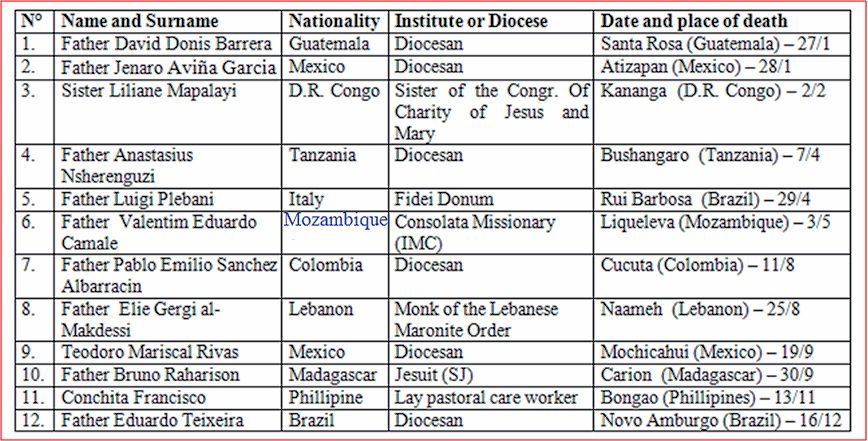


Details of the individual stories of these defenders of the faith may be found on
www.fides.org/eng/documents/missionaries_killed_2012.doc
Fides data show that in the decade from 1980-1989, 115 missionaries lost their lives in violent manner, but the number only includes those whose deaths made news.
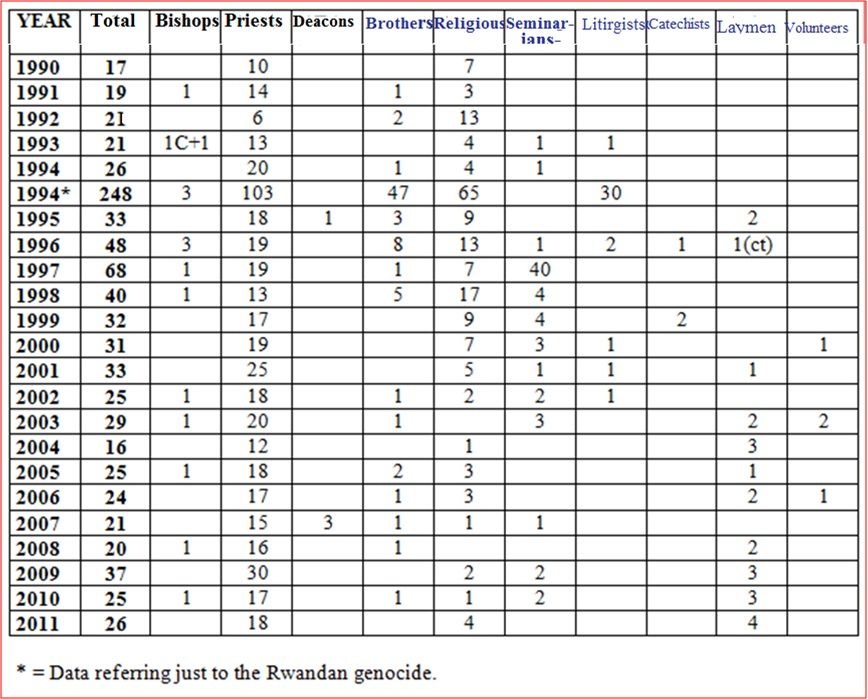
The collective summary from 1990-2000 presents a total of 604 missionaries killed, according to mission data. The number is significantly higher than the previous decade, but the period includes the 1994 genocide in Rwanda where at least 248 Church workers lost their lives. Also contributing to the higher numbers is the increased speed of the mass media in disseminating the news even from most remote places.
The total represents not only the missionaries ad gentes in the strictest sense, but all church personnel killed in a violent manner, or who sacrificed their lives aware of the risks they ran, while not abandoning the people in their care.
During the years 2001-2011, 281 Church workers were killed in the performance of their jobs.
[Modificato da TERESA BENEDETTA 01/01/2013 07:50] |
| |
 31/12/2012 22:26 31/12/2012 22:26 |
|
| | | OFFLINE | | Post: 26.007
Post: 8.499 | Registrato il: 28/08/2005
Registrato il: 20/01/2009 | Administratore | Utente Master | |
|

 In thanksgiving for
In thanksgiving for
the blessings of 2012
 Libretto cover: The Coronation of the Virgin Mary, Vincenzo Campi (1536-1581), La Collegiata di San Bartolomeo Apostolo, Busseto, Italy.
Libretto cover: The Coronation of the Virgin Mary, Vincenzo Campi (1536-1581), La Collegiata di San Bartolomeo Apostolo, Busseto, Italy.
As 2012 drew to a close, Pope Benedict on Monday celebrated First Vespers for the Feast of Mary, the Mother of God. The solemn liturgy included the Church’s traditional hymn of Thanksgiving, the Te Deum, along with Exposition and Benediction of the Blessed Sacrament, and special prayers of thanksgiving for the blessings of the past year.
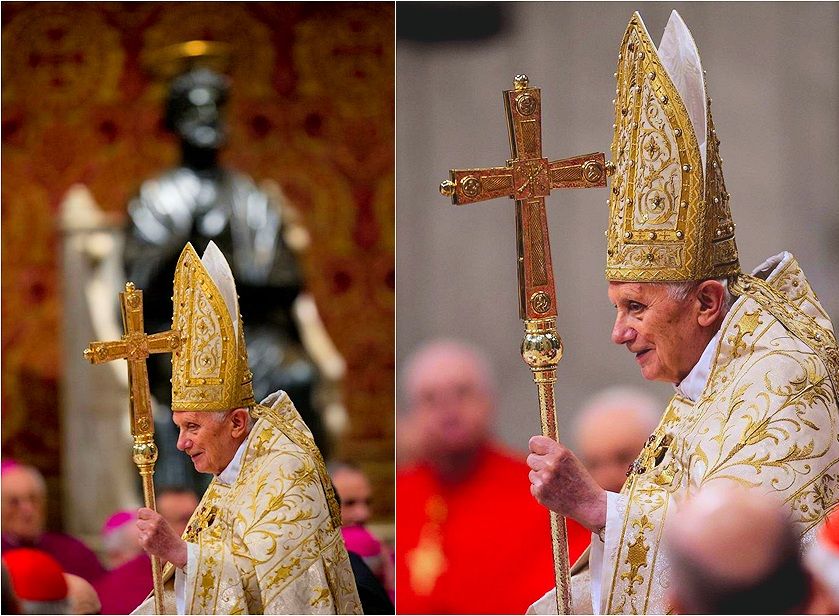
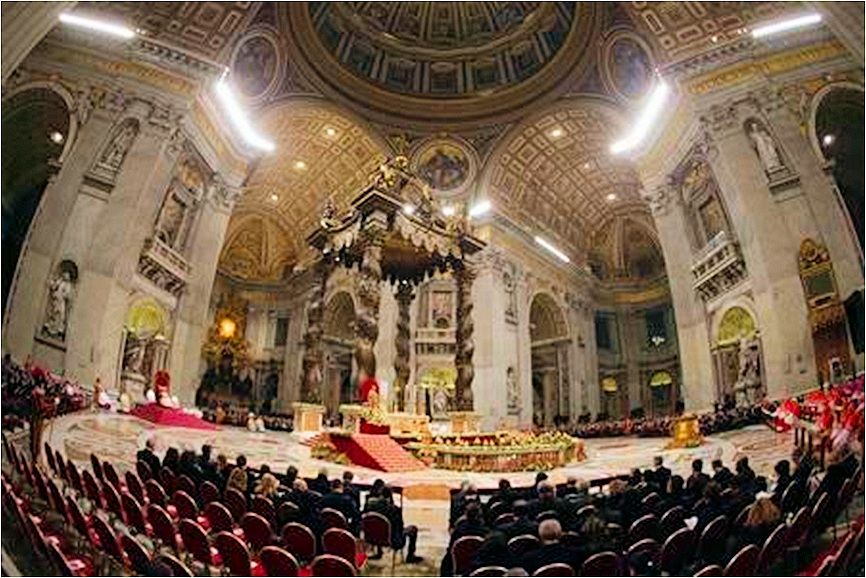
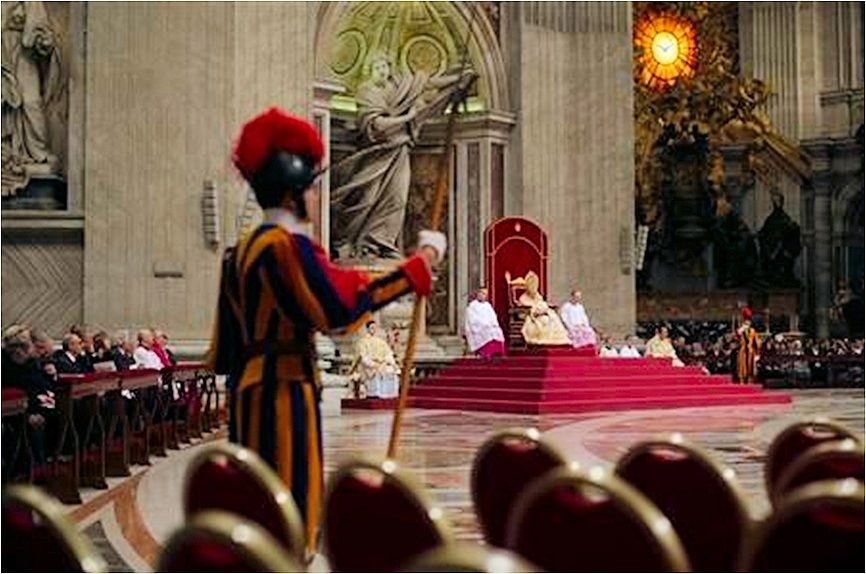
Here is the Vatican's English translation of the Holy Father's homily, which was very pastoral and specifically addressed to the Diocese and city of Rome:
Dear Cardinals,
Venerable brothers in the Episcopate and the Priesthood,
Distinguished authorities,
Dear brothers and sisters,
I thank all of you who have chosen to participate in this liturgy of the last hour of the year of the Lord 2012. This “hour” bears a particular intensity and becomes, in a sense, a synthesis of all the hours of the year that is about to come to an end.
I cordially greet the Cardinals, Bishops, Priests, consecrated persons and lay faithful, and especially the many people from the ecclesial community of Rome. In a special way I greet the Authorities present, beginning with the Mayor of the City, and thank them for choosing to share with us this moment of prayer and thanksgiving to God.
The “Te Deum” that we raise to the Lord this evening, at the end of a calendar year, is a hymn of thanksgiving that opens with the praise - "We praise you, O God, we proclaim you to be the Lord" - and ends with a profession of faith - "You are our hope, we will not be confounded forever."
For all that came to pass over the course of the year, whether easy or difficult, barren or fruitful, we give thanks to God. The Te Deum, in fact, contains a profound wisdom, the wisdom that makes us say that, despite everything, there is good in the world, and this good is destined to triumph, thanks to God, the God of Jesus Christ, who became incarnate, died, and rose again.
Certainly, it is difficult, sometimes, to accept this profound reality, since evil makes more noise than the good: a brutal murder, the spread of violence, serious injustices make the news.
Gestures of love and service, on the contrary, daily struggles endured with patience and fidelity are often left in the shadows. And this is why we cannot rely solely on the news if we want to understand the world and life.
We must be able to remain in silence, in meditation, in calm and prolonged reflection; we must know how to stop and think. In this way, our mind can find healing from the inevitable wounds of daily life, can go deeper into the events that occur in our lives and in the world, and come to the knowledge that allows us to evaluate things with new eyes.
Especially in the recollection of conscience, where God speaks to us, we learn to look truthfully at our own actions, even at the evil within us and around us, to begin a journey of conversion that makes us wiser and better, more capable of creating solidarity and communion, of overcoming evil with good.
The Christian is a man of hope, even and especially in the face of the darkness that often exists in the world, not as a consequence of God’s plans, but because of the wrong choices of man, because the Christian knows that the power of faith can move mountains (cf. Mt 17:20): the Lord can brighten even the deepest darkness.
The Year of Faith, which the Church is living, should arouse in the heart of each believer a greater awareness that the encounter with Christ is the source of true life and a solid hope. Faith in Jesus allows a constant renewal of goodness and of the ability to rise from the quicksand of sin and to begin anew.
In the Word made flesh, it is possible, to rediscover the true identity of man, who finds himself destined for the infinite love of God and called to a personal communion with Him. This truth, that Jesus Christ came to reveal, is the certainty that drives us to face with confidence the year we are about to begin.
The Church, which has received from her Lord the mission to evangelize, knows well that the Gospel is for all people, especially the younger generations, to quench that thirst for truth that everyone carries in his heart and that is often obscured by all those things that occupy life.
This apostolic commitment is all the more necessary when the faith risks being obscured in cultural contexts which hinder its personal roots and its social presence.
Rome, too, is a city where the Christian faith must be proclaimed again and again and witnessed in a credible manner. On the one hand, there is the growing number of believers of other religions, the difficulties parish communities have in attracting young people, the spread of lifestyles marked by individualism and moral relativism.
On the other, the quest, in so many people, for a sense of their own existence and for a hope that will not disappoint, that cannot leave us indifferent. Like the Apostle Paul (cf. Rom 1:14-15) all the faithful of this city should consider themselves under obligation of the Gospel towards the other inhabitants!
For this reason, for several years now, our Diocese has been committed to highlighting the missionary dimension of ordinary pastoral care, so that the faithful, supported especially by the Sunday Eucharist, can become disciples and coherent witnesses of Jesus Christ.
Christian parents, who are for their children the primary educators in the faith, are called in a special way to this coherence in their lives. The complexity of life in a great city like Rome and in a culture that often seems indifferent to God, demands that we not leave fathers and mothers alone in so crucial a task, but rather that we support and accompany them in their spiritual life.
In this regard, I encourage those who work in family ministry to implement the pastoral activities that emerged from the last Diocesan Convention, dedicated to baptismal and post-baptismal pastoral care.
It requires a generous commitment to develop the paths of spiritual formation that after the baptism of children will go with the parents in order to keep the flame of faith alive, offering concrete suggestions so that, from an early age, the Gospel of Jesus will be announced.
The emergence of groups of families, in which the Word of God is heard and the experiences of Christian life are shared helps to strengthen the sense of belonging to the ecclesial community and to grow in friendship with the Lord.
It is also important to build a relationship of cordial friendship with those of the faithful who, after having baptized their child, distracted by the demands of everyday life, do not show great interest in living this experience: they will be able to experience the love of the Church, as a caring mother, stands by them to promote their spiritual life.
In order to proclaim the Gospel and to allow those who still do not know Jesus, or have abandoned Him, to cross again the threshold of faith and live in communion with God, it is essential to know in depth the meaning of the truths contained in the Profession of Faith.
The commitment to a systematic training of pastoral workers, which for some years now has taken place in the various prefectures of the Diocese of Rome, is a valuable tool that must be pursued with commitment in the future, in order to form lay people who know how to echo the Gospel in every house and in every room, even in those listening centres that have brought so much fruit since the time of the city Missions.
In this respect, the “Dialogues in the Cathedral,” which have been held in the Basilica of St. John Lateran for some years, constitute a particularly appropriate experience to encounter the City and to dialogue with those who seek God and truth, and who are inquiring into the into the great questions of human existence.
As in the past, so today the Church of Rome is called to announce and to tirelessly witness to the riches of the Gospel of Christ. It must do so also by supporting the many people living in situations of poverty and marginalization, as well as families in need, especially when they have to assist sick and disabled people. I hope very much that the Institutions at various levels will not allow their activities to cease, so that all citizens might have access to what is essential to a dignified life.
Dear friends, on the last night of the year that is coming to an end, and at the threshold of the new, let us praise the Lord! Let us show to “He who is and who was and who is to come” (Rev. 1:8) repentance and asking for forgiveness for their offenses, as well as the sincere thanks for the countless benefits granted by the divine goodness.
In particular, we give thanks for the grace and truth that have come to us through Jesus Christ. In Him the fullness of all human time is placed. The future of every human being is kept safe in him. In Him, the fulfilment of the hopes of the Church and of the world comes true. Amen.
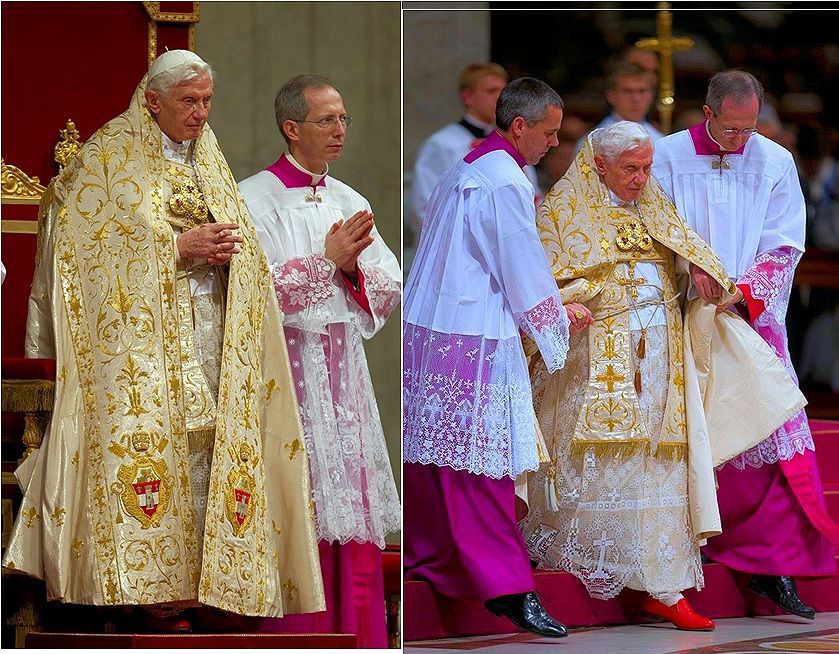
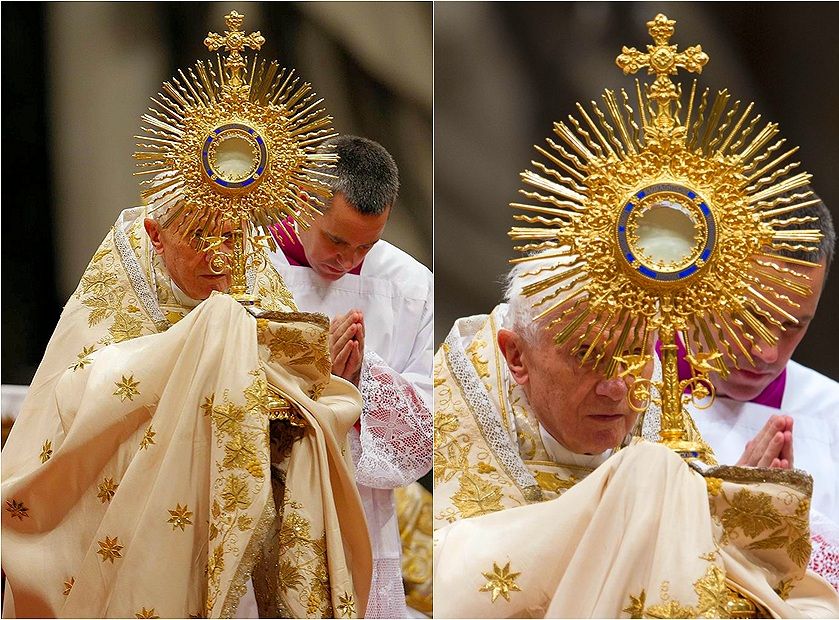 [Modificato da TERESA BENEDETTA 31/12/2012 23:29] |
| |
 01/01/2013 00:06 01/01/2013 00:06 |
|
| | | OFFLINE | | Post: 26.008
Post: 8.500 | Registrato il: 28/08/2005
Registrato il: 20/01/2009 | Administratore | Utente Master | |
|
 Pope Benedict visits the creche
Pope Benedict visits the creche
in St. Peter's Square
After Vespers this evening, the Holy Father made his customary visit to the Nativity scene in St. Peter's Square before which he said a silent prayer.
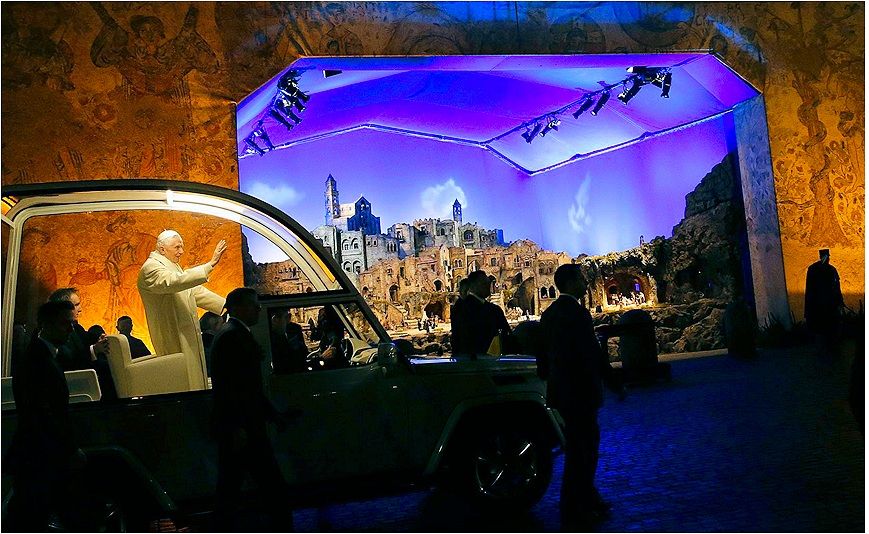
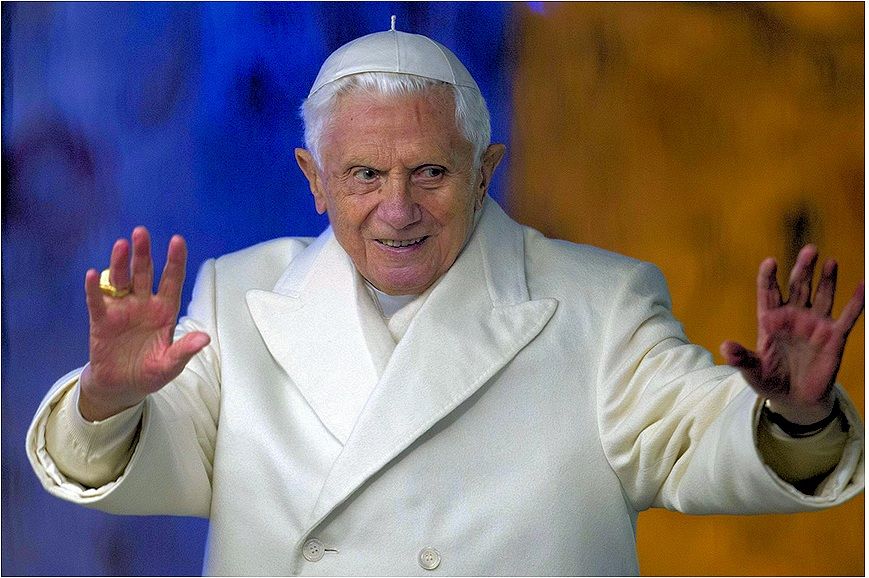
This year's Nativity scene is described in an article in L'Osservatore Romano on the main Nativity scenes in the Vatican this year.
Houses built into rocky hillsides, steep stairways, church steeples rising above the stone dwellings - the Nativity scene in St. Peter's Square this year is visually arresting.
Jesus is born amid a slice of life typical of the Sassi di Matera (literally, 'stones of Matera', referring to the cave dwellings in the Matera area between the southern Italian regions of Apulia and Basilicata, which date back to a prehistoric troglodyte community 9,000 years ago. The settlements, said to be the oldest continuously inhabited communities in the world, became notorious pockets of poverty and disease in modern times until the Italian government, the European Union and UNESCO helped develop the area into a world heritage tourist site. Because its rocky landscape resembles that of ancient Jerusalem, it has also become a location for the filming of Biblical stories.]
Thus the Holy Family finds hospitality amid the peasants of the ancient civilization that flourished in Lucania (the area of southern Italy between the Tyrrhenian Sea and the Gulf of Taranto) and that was focused on local crafts and familial-religious bonds.
The Nativity scene itself is displayed under a modern micropore mesh structure that recreates the frescoes from the most important of Matera's 'cave churches' dating to the Lombard era.
The entire complex is the work of master artisan Francesco Attese and was offered to Benedict XVI by the Basilicata region, with the sponsorship of the Vatican Governatorate.
[TMNews reports a statement today by the president of the Basilicata region, Vito De Filippo, translated here:
The blessing given today by Benedict XVI to our Lucanian Nativity scene situated in the Sassi di Matera is something that directly involves all believers and also goes beyond its spiritual message... In these difficult times for the world, it gives us pride that the Holy Father appreciates the peaceful and modest image that the Lucanian landscape evokes which incarnates a spirit that is useful for the times.
The Lucans of southern Italy, who are often considered among the least fortunate of people, feel tonight that for a change, they come first, and we see this privilege as a commitment to improve and build upon our patrimony of faith and civic virtues.
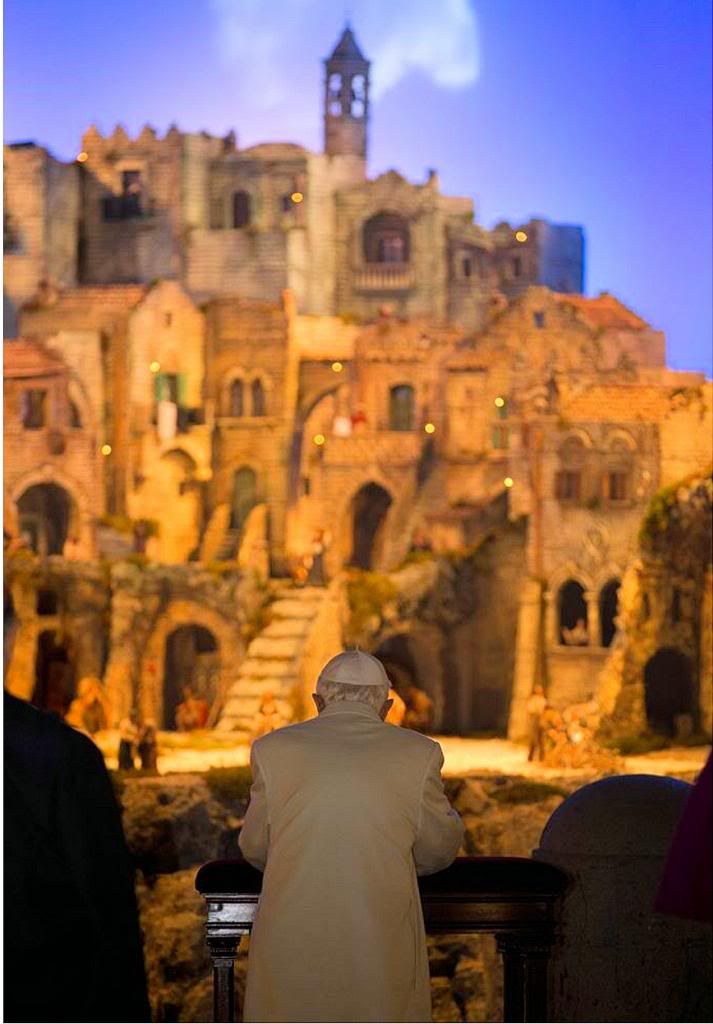
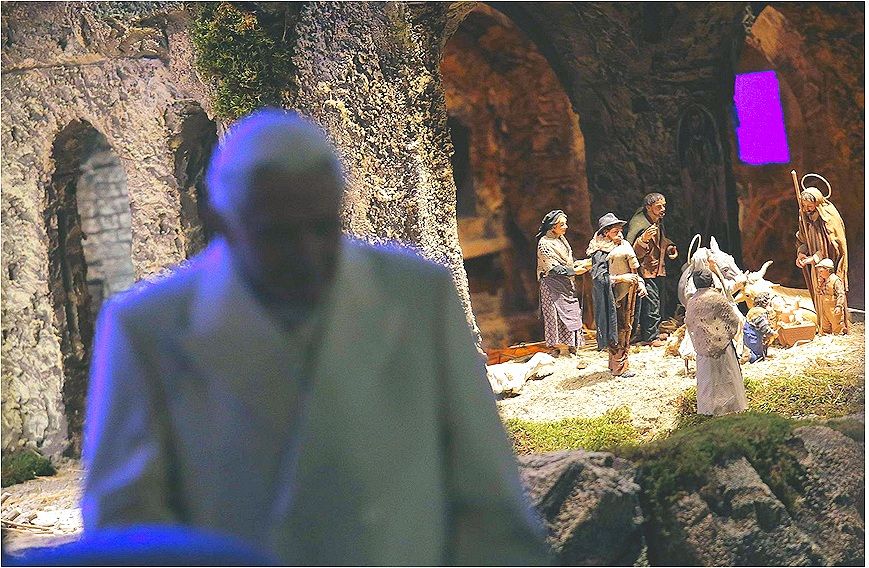
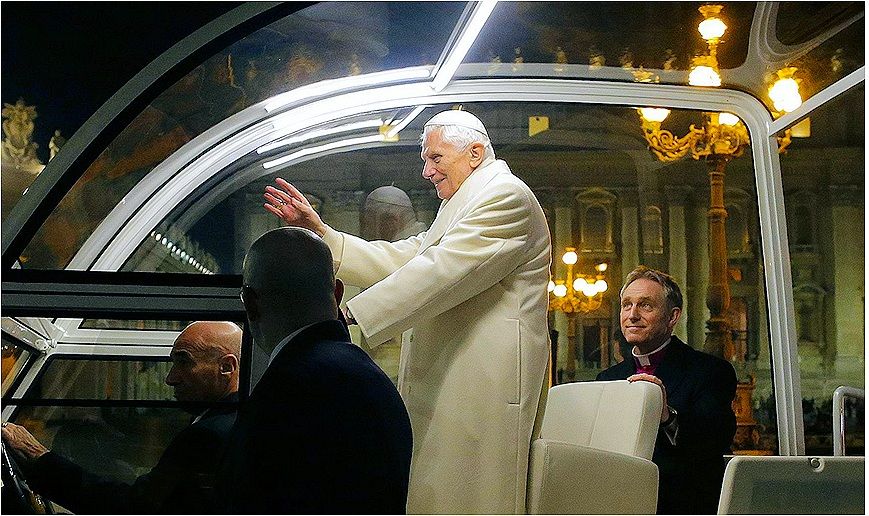
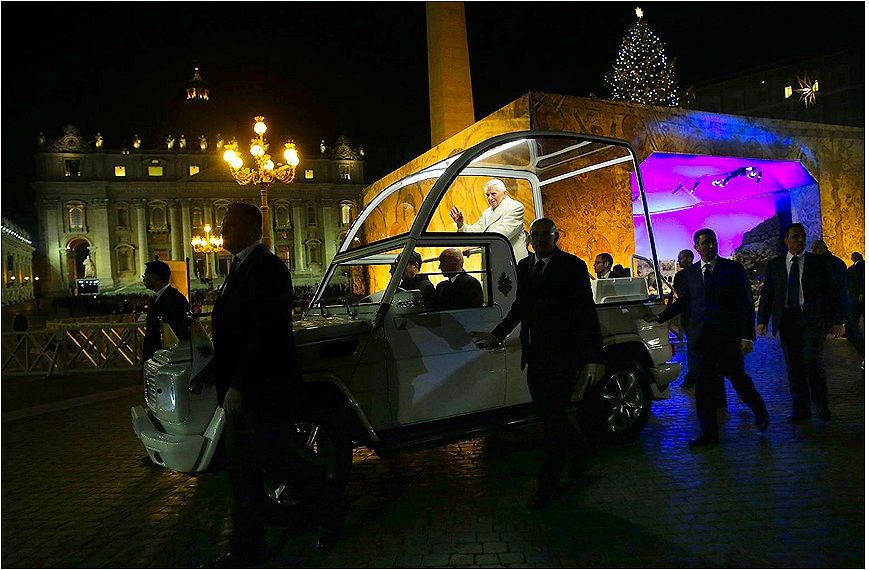 Here's the rest of the OR article about the notable Nativity scenes in the Vatican this year - which is maddening because it describes a number of scenes but the article itself is only illustrated by two miserable thumbnails that fail to convey the scenes described in the story. You would think it would have been an opportunity to do a decent photo spread. But No, editor Vian does not at all think like any editor I know! (It's fine to make up your own rules but only if they improve on accepted journalistic SOP, not when they violate them - and common sense, as well!)
The creches at the Vatican
Here's the rest of the OR article about the notable Nativity scenes in the Vatican this year - which is maddening because it describes a number of scenes but the article itself is only illustrated by two miserable thumbnails that fail to convey the scenes described in the story. You would think it would have been an opportunity to do a decent photo spread. But No, editor Vian does not at all think like any editor I know! (It's fine to make up your own rules but only if they improve on accepted journalistic SOP, not when they violate them - and common sense, as well!)
The creches at the Vatican
by Nicola Gori
Translated from the 12/30/12 issue of

The creche on St. Peter's Square is the first of quite a few Nativity scenes in the Vatican's main buildings and courtyards this Christmas.
From the piazza, we go inside St. Peter's Basilica, with its monumental Nativity scene set up every year by the 'Sampietrini' in the left lateral nave, at the altar of St. Pius X in the Chapel of the Presentation.
The figures, sculpted in wood and painted in polychrome, are the work of German sculptor Henirich Zunterer from Oberammergau [famous scene of an annual Passion Play dating to the Middle Ages], who first presented the main figures of the Nativity as a gift in 1995 to John Paul II. who decided they should be set up in the Basilica.
Over the years, more figures have been added to the scene, and some of them are even mechanized, the latter a gift from Sonia Bernardini, a parishioner of Loreto, to Cardinal Angelo Comastri, Arch-Priest of St. Peter's Basilica (and former Apostolic Legate to Loreto). A device for generating artificial snow was later donated by Antonio Foligno.
Next, we come to the pontifical parish of Sant'Anna (mother of Mary), where this year, the Nativity scene was conceived to mark the Year of Faith. Behind the traditional scenery of the cave in Bethlehem where the Christ Child was born, there looks a great arching door, which is the only exit from the cave, in order to return to daily routine. The great door is the Porta Fidei that we are all invited to pass through. The icon of the Year of Faith is represented to the right of the door.
The parish pries,t Augustinian Fr. Bruno Silvestrini says, "Everyone who accepts the message of the angels - all men of good will - encounter Christ, adore him and then go to tell others the Good News. The artist behind this Nativity scene portrays the most important verbs in the Gospel of St. Luke - to go, to see, to adore, to go back to one's daily life."
The scene, designed by Mariano Piampiani of Tolentino (Macerata), uses dozens of figures sculpted by Antonio Giordano of Monreale (Sicily). Jesus is surrounded by angels in celebration; the shepherds are seen adoring the baby accompanied by their wives and children to watch with wonder what had been announced to them by God's messengers from heaven. The entire scene underscores an essential truth: that God first manifested himself to the poor and to the little ones.
Leaving the parish church of Sant'Anna, we walk towards the sector occupied by the Swiss Guards. On the street that leads to the Bronze Doors of the Apostolic Palace, a creche has been set up over the opening to a well. The figure of a Swiss Guard watches over the Christ Child in the cradle.
Within, in the chapel of St. Martin, Luca Mueller and Carlo Pfister, devised a Nativity scene using special materials, with bricks as a base. They used a small wooden table, with hay and pine cones from the Pontifical villas in Castel Gandolfo, to recreate the Nativity.
In the Church of San Pellegrino, we find the creches set up by the Vatican Gendarmerie - one in the barracks, and one in the church itself. The latter, assembled by Emilio Pressciuttini, makes use of three hollowed out cypress trunks from trees that have fallen down in the Swiss Guard cemetery, The scene is built into the main altar and seems to invite the visitor into the mysteries of the faith.
At the offices of the Osservatore Romano's Photo Services, there is a Neapolitan-style Nativity scene presented to the Pope by the street cleaners of Rome. It is the work of Giuseppe Tani who built it on an artistic pedestal made by Dandolo Foglietta.
At the entrance to Tipografia Vaticana (the Vatican printing press), we find a Nativity scene set up every year by technical director Giuseppe Canesso working with Filippo Graini. The setting is reminiscent of the interior of an Italian home in the second half of the 19th century. In the center is the stall where Jesus was born, surrounded by Mary, Joseph and the Three Kings. Mary gently uncovers the Baby's blanket as Joseph and the Magi gaze at the Baby in adoration. Not far from them, a peasant is milking a cow, a smith is forging an iron instrument on his anvil; a shepherd is shearing wool from a lamb; and a woman is drawing water from the well. Birds are twittering on a bush, animated by a n electric mechanism. All the figures and props were made out of the printing press's daily 'wastes', starting with the boxes that supplies come in to the trimmings from the cardboard and other materials used for bookbinding.
And now we come to the Cortile di San Damaso [the main courtyard through which visitors enter the Apostolic Palace]. Here, the Associazione Santi Pietro e Paolo have their headquarters. For the year of faith, the sodality decided to have a Nativity scene dedicated to Benedict XVI.
It shows important moments in the life of Joseph Ratzinger - starting with the house where he was born in Marktl, on the right, and on the left, the Cathedral of Freising, where he was ordained a priest. In the center, a grand staircase - representing man's ascent towards God - leads to the Nativity scene itself, which is located inside a cave on the slopes of the Bavarian Alps which rise in the background. On the right, one sees the Gothic spires of the Cathedral of St. Peter in Regensburg, to symbolize his academic years, having been a professor there from 1060 to 1977 when Paul VI named him Archbishop of Munich and Freising.
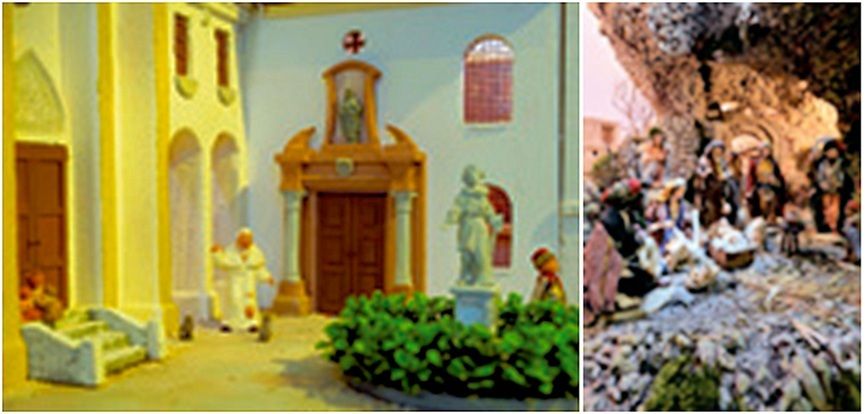
In front of the Freising Cathedral, Benedict XVI himself, as a small figurine, made in Naples, accompanied by two cats.
Lastly, the Nativity scene in the historic seat of the Circolo San Pietro, not at the Vatican, but at the Palazzo San Callisto in Trastevere. It was donated by a member in the early years of the 20th century. The figures are of papier mache, with the Virgin Mary holding baby garments as she tends to the Christ Child. St, Joseph looks on, as the shepherds adore the Baby, as do the Three Kings, richly robed and laden with gifts.
[Modificato da TERESA BENEDETTA 01/01/2013 04:44] |
| |
 01/01/2013 00:14 01/01/2013 00:14 |
|
| | | OFFLINE | | Post: 26.009
Post: 8.501 | Registrato il: 28/08/2005
Registrato il: 20/01/2009 | Administratore | Utente Master | |
|

 Agenda for a year of faith:
Agenda for a year of faith:
Looking ahead at Pope Benedict’s 2013
by Francis X. Rocca

VATICAN CITY, Dec. 28 (CNS) — Fortunetelling, like all occult practices, is strictly taboo at the Vatican; and prophecy is a rare gift among journalists. But Pope Benedict XVI’s calendar for 2013 is already filling up with planned, probable or possible events. Here are 10 to watch for in the news during the coming year.
1. Italian elections: When Italians go to the polls Feb. 24, the big story for most foreign observers will be the fate of a comeback attempt by former Prime Minister Silvio Berlusconi. For the Pope and other I[talian bishops, a prime concern will be whether voters instead elect a center-left majority that could bring Italy into sync with other major Western European countries — and out of line with Catholic moral teaching — on such issues as in vitro fertilization and legally recognized unions of same-sex partners.
[Although transitional Prime Minister Mario Monti has now announced he is leading a colation ticket for reform, Italian polls show that the leftist Partita Democrata now under former Communist Pierluigi Bersani will likely sweep the elections, even if former Prime Minister Silvio Berlusconi is threatening to make a comeback leading the political center-right. A leftist victory will certainly not be good for the Church's non-negotiable issues. And yet, in recent days, L'Osservatore Romano, and separately, the normally judicious Cardinal Angelo Bagnasco, president of the Italian bishops' conference, made public endorsements of Monti in an unprecedented manner - in many ways, unwarranted and improper.
And what did they get for their unsolicited endorsements? Monti said on December 28 that while he was 'grateful' for the 'Vatican endorsement' (It is by no means the Vatican position - only that of OR editor Vian, who inexplicably and infuriatingly allows his personal politics to color the OR's reporting and commentary. and of Cardinal Bagnasco, who appeared to have second thoughts afterwards), 'out of respect for individual freedom of conscience', ethical questions (the OR editor had singled out Monti's ethics for praise) would not constitute any part of his coalition's electoral platform. So in his own way, Monti is being the self-described 'adult Catholic' ruled by secular criteria that former Prime Minister Romani Prodi was. As for Cardinal Bagnasco, his predecessor as CEI president, Cardinal Camillo Ruini - who was prodigiously proactive in his time in promoting Catholic positions, not candidates, at the polling place - expressed perplexity at the 'rush' to get on the Monti bandwagon. What the OR and Bagnasco have done is to embarrass Pope Benedict XVI who has never endorsed nor would endorse an individual political candidate.
2. New Encyclical: Pope Benedict’s fourth encyclical will be released in the first half of next year, very possibly in the spring, according to Jesuit Father Federico Lombardi, the Vatican spokesman. Treating the subject of faith, the encyclical will complete a trilogy on the three “theological virtues”; the previous encyclicals were Deus caritas est (2005) on charity, and Spe salvi (2007) on hope. [Rocca omits the third encyclical, Caritas in veritate (2009), which is a special application of Christian charity to social issues.]
3. Worldwide solemn eucharistic adoration: On the feast of Corpus Christi, June 2, Pope Benedict will lead an hour of eucharistic adoration to be observed simultaneously around the world, highlighting a traditional devotion that fell largely out of use in the decades after the Second Vatican Council, but which has lately grown more popular with the Pope’s personal encouragement. This promises to be one of the most visually impressive of many events scheduled for the Year of Faith, which ends Nov. 24.
4. New charter for Catholic health care workers: The Vatican plans to publish an updated version of its 1995 guidelines for Catholic hospitals, taking into account nearly two decades of technological developments and political trends in areas including abortion, euthanasia, embryonic stem-cell research and human cloning. The document, whose target release date is in June, will reflect Catholic moral teaching on biomedical issues and Catholic social teaching on the equitable and effective provision of health care.
5. World Youth Day in Rio de Janeiro: Hundreds of thousands of young Catholics are expected to gather in Rio in July for a week of events whose highlight will be the presence of the ope, encouraging them to cultivate their faith and religious identity. This will be Pope Benedict’s second trip to Brazil, the country with the world’s largest Catholic population, where he is also likely to address problems of inequality in the free world's largest developing economy, as well as the need for good government and civil peace in Latin America as a whole. [It will be Benedict XVI's fourth international WYD in eight years, after Cologne in 2005, Sydney in 2008 and Madrid in 2011.]
6. New U.S. ambassador? The post of U.S. ambassador to the Vatican has been vacant since Miguel H. Diaz stepped down shortly after the November 2012 elections, and the choice of his replacement will be especially delicate given current tensions between the church and the Obama administration.
All previous ambassadors have been Catholics, but it could be hard to find a Democrat who has not taken a public stand over the administration’s plan — strenuously opposed by U.S. bishops — to require that most Catholic institutions provide insurance coverage for contraception and sterilizations, which violate the church’s moral teaching. [And what difference does it make to the Vatican who the US ambassador is? He/she will still be representing a President whose policies and positions are unabashedly anti-life and anti-religious freedom. He/sge will be treated with unfailing courtesy, but he really won't have any occasion to promote his boss's anti-Christian principles at the Vatican, or he'd be declared persona non grata tout de suite! He/she will be reduced to - as Ambassador Diaz was - to saying at every occasion that "our relations are good despite our differences". Well, yeah, not that the Vatican is likely to declare war on an anti-Christian administration!]
7. New Secretary of State? Cardinal Tarcisio Bertone has served as Pope Benedict’s top aide since 2006. Some commentators, especially in the Italian press, have accused him of neglecting necessary administrative reforms and blamed him for mismanagement documented in the so-called VatiLeaks of confidential correspondence.
Pope Benedict reaffirmed his confidence in his longtime collaborator last July, but the cardinal is already three years past the standard retirement age of 75, so he could well leave the stage this year. His replacement would likely be another Italian, perhaps Cardinal Mauro Piacenza, currently prefect of the Congregation for the Clergy. [Anyone betting that Bertone will be leaving soon?]
8. New archbishop of Chicago? Cardinal Francis E. George, who has led the Archdiocese of Chicago since 1997, turned 75 — the age at which bishops must offer to resign — last Jan. 16. Pleased with the effects of his recent chemotherapy for kidney cancer, he has called his prognosis “very, very hopeful” and said that he has no plans to step down. But he has acknowledged the seriousness of his condition and the possibility that Pope Benedict might replace him this year.
9. New cardinals? The number of cardinals under the age of 80, the only ones eligible to vote for the next pope, will be down to no more than 110 by Oct. 19. Pope Benedict could choose to boost their number to the legal limit of 120 by calling a consistory on the day before the feast of Christ the King (Nov. 24, 2013), a traditional occasion for the creation of cardinals and the last day of the Year of Faith. Likely additions to the College of Cardinals include Archbishop Gerhard L. Muller, prefect of the Congregation for the Doctrine of the Faith, and Archbishop Vincent G. Nichols of Westminster, England.
10. Anniversary of the Edict of Milan: 2013 is the 1,700th anniversary of the Roman Empire’s legal recognition of Christianity, a watershed moment in the history of the Church. Hopes have dimmed that Pope Benedict and Russian Orthodox Patriarch Kirill of Moscow might jointly commemorate the occasion at the Serbian birthplace of the Emperor Constantine I, who promulgated the edict. But the Pope is almost certain to mark the anniversary in some way, perhaps taking the opportunity to highlight one of his primary concerns - the multiform threats to religious liberty around the world today.
[Modificato da TERESA BENEDETTA 01/01/2013 05:22] |
| |
 01/01/2013 05:10 01/01/2013 05:10 |
|
| | | OFFLINE | | Post: 26.010
Post: 8.502 | Registrato il: 28/08/2005
Registrato il: 20/01/2009 | Administratore | Utente Master | |
|
|
| |
 01/01/2013 15:48 01/01/2013 15:48 |
|
| | | OFFLINE | | Post: 26.011
Post: 8.503 | Registrato il: 28/08/2005
Registrato il: 20/01/2009 | Administratore | Utente Master | |
|


 Tuesday, January 1, Octave Day of the Nativity of the Lord
Tuesday, January 1, Octave Day of the Nativity of the Lord
SOLEMNITY OF MARY, MOTHER OF GOD
WORLD DAY OF PEACE
 From left: The first known Marian image is a Madonna painted on the wall of a 2nd century Roman catacomb; Our Lady of Kazan, 13th-century Russian icon; Our Lady of Perpetual Help, a 13th-century icon from Crete brought to Rome in the 16th century and venerated since the 19th century under her present title; Our Lady of Vladimir, 12th century Russian icon and one of the most venerated images in the Russian orthodox faith; two graphic icons of Mary as the God-bearer,
In 1974, Pope Paul VI instituted this feast on January 1 in place of the Feast of the Circumcision of Jesus, as the Roman Catholic Church had celebrated the day for centuries. As the Church also celebrates a World Day for Peace on January 1, Paul VI pointed out it was doubly appropriate since Mary is also the Queen of Peace. The first documented reference to Mary as the Mother of God was made by Origen in 252. Veneration of Mary as the Theotokos - 'God-bearer' - became widespread in the next two centuries and initiated a great controversy when the Emperor Nestorius claimed that Mary was only the mother of Jesus the man. Both the Councils of Ephesus and Chalcedon in the 5th century condemned the Nestorian heresy and confirmed the doctrine of the Theotokos. Mary as the God-bearer was a favorite subject of Byzantine icon painters.
From left: The first known Marian image is a Madonna painted on the wall of a 2nd century Roman catacomb; Our Lady of Kazan, 13th-century Russian icon; Our Lady of Perpetual Help, a 13th-century icon from Crete brought to Rome in the 16th century and venerated since the 19th century under her present title; Our Lady of Vladimir, 12th century Russian icon and one of the most venerated images in the Russian orthodox faith; two graphic icons of Mary as the God-bearer,
In 1974, Pope Paul VI instituted this feast on January 1 in place of the Feast of the Circumcision of Jesus, as the Roman Catholic Church had celebrated the day for centuries. As the Church also celebrates a World Day for Peace on January 1, Paul VI pointed out it was doubly appropriate since Mary is also the Queen of Peace. The first documented reference to Mary as the Mother of God was made by Origen in 252. Veneration of Mary as the Theotokos - 'God-bearer' - became widespread in the next two centuries and initiated a great controversy when the Emperor Nestorius claimed that Mary was only the mother of Jesus the man. Both the Councils of Ephesus and Chalcedon in the 5th century condemned the Nestorian heresy and confirmed the doctrine of the Theotokos. Mary as the God-bearer was a favorite subject of Byzantine icon painters.
Readings for today's Mass:
www.usccb.org/bible/readings/010113.cfm
AT THE VATICAN TODAY
The Holy Father celebrated Mass in St. Peter's Basilica and then led Angelus prayers in St. Peter's Square.
@Pontifex on 1/1/13:
  THE HOLY FATHER'S
THE HOLY FATHER'S
PRAYER INTENTIONS FOR JANUARY 2013
General intention:
That in this Year of Faith Christians may deepen their knowledge of the mystery of Christ
and witness joyfully to the gift of faith in him.
Mission intention:
That the Christian communities of the Middle East, often discriminated against,
may receive from the Holy Spirit the strength of fidelity and perseverance.
 To all the friends of the Forum
To all the friends of the Forum
and to Gloria for hosting us,
many thanks for the spiritual fellowship we share
and may the new year be full of God's grace.
AD MULTOS ANNOS, SANCTE PATER,
AND THANK YOU FOR ALL YOU DO AND ALL YOU ARE!
[Modificato da TERESA BENEDETTA 01/01/2013 16:09] |
| |
 01/01/2013 17:46 01/01/2013 17:46 |
|
| | | OFFLINE | | Post: 26.012
Post: 8.504 | Registrato il: 28/08/2005
Registrato il: 20/01/2009 | Administratore | Utente Master | |
|

 MASS ON THE SOLEMNITY
MASS ON THE SOLEMNITY
OF MARY, MOTHER OF GOD
 Libretto cover: L'Immacolata, Carlo Maratta, late 17th cent., Chiesa di Sant'Isidoro, Rome.
Libretto cover: L'Immacolata, Carlo Maratta, late 17th cent., Chiesa di Sant'Isidoro, Rome.
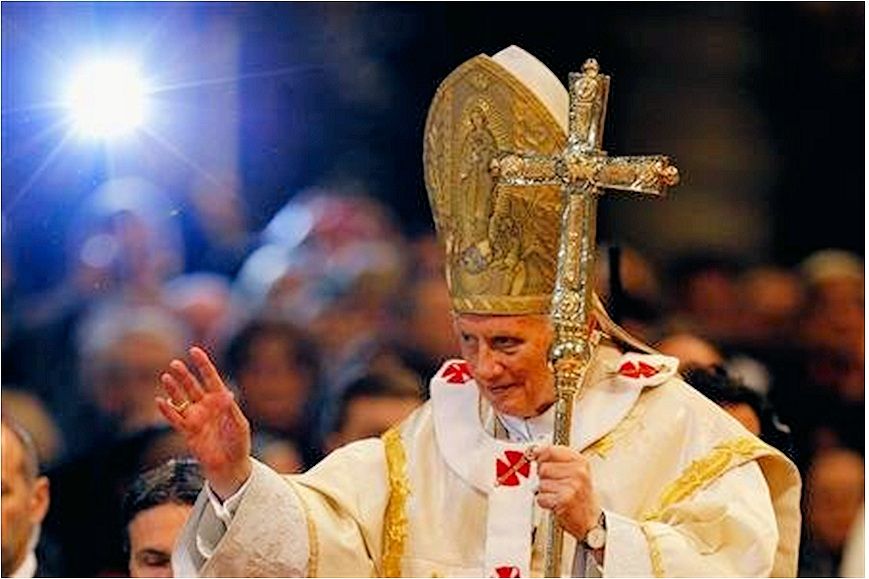
Popw Benedict XVI presided at the celebration of Holy Mass in St. Peter's basilica this morning to mark the Solemnity of Mary, the Mother of God, and the Church's World Day for Peace.
Concelebrating with the Pope were Cardinal Secretary of State Tarcisio Bertone; Cardinal Peter Kodwo Appiah Turkson, President of the Pontifical Council for Justice and Peace (PCJP); Archbishop Giovanni Angelo Becciu, Deputy Secretary of State (Sostituto) for General Affairl; Archbishop Dominique Mamberti, Secretary for Relations with States; Mons. Mario Toso, S.D.B., Secretary of the PCJP; and Mons. Beniamino Stella, President of the Pontifical Ecclesiastical Academy.
In his homily, the Pope urged the faithful to look to God and to His son, Jesus, for true peace in a world fraught with problems, darkness and anguish. He cited Jesus's mother, as an example of interior peace despite the unforseen events that were to disrupt her life.
"This is the inner peace," he said, "that we want to have in the midst of the sometimes tumultuous and confusing events of history, events the meaning of which we often fail to grasp and which unsettle us," he said.
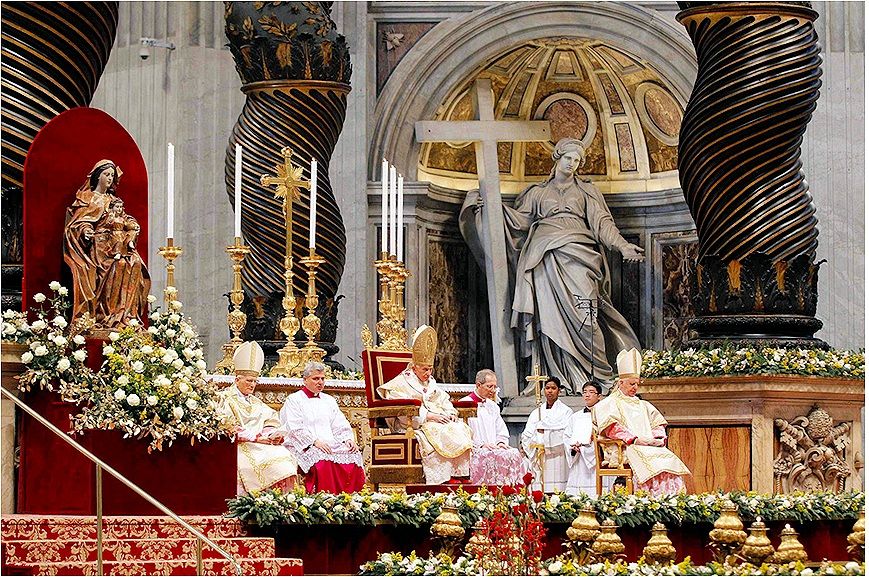
Here is the Vatican's English translation of the Pope's homily:
Dear Brothers and Sisters,
"May God bless us and make his face to shine upon us." We proclaimed these words from Psalm 66 after hearing in the first reading the ancient priestly blessing upon the people of the covenant.
It is especially significant that at the start of every new year God sheds upon us, his people, the light of his Holy Name, the Name pronounced three times in the solemn form of biblical blessing. Nor is it less significant that to the Word of God – who "became flesh and dwelt among us" (Jn 1:14) as "the true light that enlightens every man" (1:9) – is given, as today’s Gospel tells us, the Name of Jesus eight days after his birth (cf. Lk 2:21).
It is in this Name that we are gathered here today. I cordially greet all present, beginning with the Ambassadors of the Diplomatic Corps accredited to the Holy See.
I greet with affection Cardinal Bertone, my Secretary of State, and Cardinal Turkson, with all the officials of the Pontifical Council for Justice and Peace; I am particularly grateful to them for their effort to spread the Message for the World Day of Peace, which this year has as its theme "Blessed are the Peacemakers".
Although the world is sadly marked by "hotbeds of tension and conflict caused by growing instances of inequality between rich and poor, by the prevalence of a selfish and individualistic mindset which also finds expression in an unregulated financial capitalism," as well as by various forms of terrorism and crime, I am convinced that "the many different efforts at peacemaking which abound in our world testify to mankind’s innate vocation to peace.
In every person the desire for peace is an essential aspiration which coincides in a certain way with the desire for a full, happy and successful human life. In other words, the desire for peace corresponds to a fundamental moral principle, namely, the duty and right to an integral social and communitarian development, which is part of God’s plan for mankind. Man is made for the peace which is God’s gift.
All of this led me to draw inspiration for this Message from the words of Jesus Christ: ‘Blessed are the peacemakers, for they will be called children of God’ (Mt 5:9)" (Message, 1).
This beatitude "tells us that peace is both a messianic gift and the fruit of human effort … It is peace with God through a life lived according to his will. It is interior peace with oneself, and exterior peace with our neighbours and all creation" (ibid., 2, 3). Indeed, peace is the supreme good to ask as a gift from God and, at the same time, that which is to be built with our every effort.
We may ask ourselves: what is the basis, the origin, the root of peace? How can we experience that peace within ourselves, in spite of problems, darkness and anxieties? The reply is given to us by the readings of today’s liturgy.
The biblical texts, especially the one just read from the Gospel of Luke, ask us to contemplate the interior peace of Mary, the Mother of Jesus. During the days in which "she gave birth to her first-born son" (Lk 2:7), many unexpected things occurred: not only the birth of the Son but, even before, the tiring journey from Nazareth to Bethlehem, not finding room at the inn, the search for a chance place to stay for the night; then the song of the angels and the unexpected visit of the shepherds.
In all this, however, Mary remains even tempered, she does not get agitated, she is not overcome by events greater than herself; in silence she considers what happens, keeping it in her mind and heart, and pondering it calmly and serenely. This is the interior peace which we ought to have amid the sometimes tumultuous and confusing events of history, events whose meaning we often do not grasp and which disconcert us.
The Gospel passage finishes with a mention of the circumcision of Jesus. According to the Law of Moses, eight days after birth, baby boys were to be circumcised and then given their name. Through his messenger, God himself had said to Mary – as well as to Joseph – that the Name to be given to the child was "Jesus" (cf. Mt 1:21; Lk 1:31); and so it came to be.
The Name which God had already chosen, even before the child had been conceived, is now officially conferred upon him at the moment of circumcision.
This also changes Mary’s identity once and for all: she becomes "the mother of Jesus", that is the mother of the Saviour, of Christ, of the Lord. Jesus is not a man like any other, but the Word of God, one of the Divine Persons, the Son of God: therefore the Church has given Mary the title Theotokos or Mother of God.
The first reading reminds us that peace is a gift from God and is linked to the splendour of the face of God, according to the text from the Book of Numbers, which hands down the blessing used by the priests of the People of Israel in their liturgical assemblies.
This blessing repeats three times the Holy Name of God, a Name not to be spoken, and each time it is linked to two words indicating an action in favour of man: "The Lord bless you and keep you: the Lord make his face to shine upon you: the Lord lift up his countenance upon you, and give you peace" (6:24-26).
So peace is the summit of these six actions of God in our favour, in which he turns towards us the splendour of his face.
For sacred Scripture, contemplating the face of God is the greatest happiness: "You gladden him with the joy of your face" (Ps 21:7). From the contemplation of the face of God are born joy, security and peace. But what does it mean concretely to contemplate the face of the Lord, as understood in the New Testament?
It means knowing him directly, in so far as is possible in this life, through Jesus Christ in whom he is revealed. To rejoice in the splendour of God’s face means penetrating the mystery of his Name made known to us in Jesus, understanding something of his interior life and of his will, so that we can live according to his plan of love for humanity.
In the second reading, taken from the Letter to the Galatians (4:4-7), Saint Paul says as much as he describes the Spirit who, in our inmost hearts, cries: "Abba! Father!" It is the cry that rises from the contemplation of the true face of God, from the revelation of the mystery of his Name. Jesus declares, "I have manifested thy name to men" (Jn 17:6).
God’s Son made man has let us know the Father, he has let us know the hidden face of the Father through his visible human face; by the gift of the Holy Spirit poured into our hearts, he has led us to understand that, in him, we too are children of God, as Saint Paul says in the passage we have just heard: "The proof that you are sons is that God has sent the Spirit of his Son into our hearts: the Spirit that cries, ‘Abba, Father’" (Gal 4:6).
Here, dear brothers and sisters, is the foundation of our peace: the certainty of contemplating in Jesus Christ the splendour of the face of God the Father, of being sons in the Son, and thus of having, on life’s journey, the same security that a child feels in the arms of a loving and all-powerful Father.
The splendour of the face of God, shining upon us and granting us peace, is the manifestation of his fatherhood: the Lord turns his face to us, he reveals himself as our Father and grants us peace. Here is the principle of that profound peace – "peace with God" – which is firmly linked to faith and grace, as Saint Paul tells the Christians of Rome (cf. Rom 5:2).
Nothing can take this peace from believers, not even the difficulties and sufferings of life. Indeed, sufferings, trials and darkness do not undermine but build up our hope, a hope which does not deceive because "God’s love has been poured into our hearts through the Holy Spirit which has been given to us" (5:5).
May the Virgin Mary, whom today we venerate with the title of Mother of God, help us to contemplate the face of Jesus, the Prince of Peace. May she sustain us and accompany us in this New Year: and may she obtain for us and for the whole world the gift of peace. Amen!
The Pope's words at Mass
and at the Angelus

VATICAN CITY Jan. 1, 2013, (Reuters) - Pope Benedict said in his New Year's message on Tuesday he hoped 2013 would be a year of peace and that the world was under threat from unbridled capitalism, terrorism and criminality.
The 85-year-old Pope rang in the new year with a Mass for about 10,000 people in St Peter's Basilica on the day the Roman Catholic Church marks its World Day of Peace with initiatives around the world.
He also spoke of peace after the Mass, addressing tens of thousands of people who had followed the service from outside in St Peter's Square [and stayed for the Pope's holiday Angelus prayer and reflection.]
"A new year is like a trip. With the light and the grace of God, may it be the start of a path to peace for every person, every family, every country and for the entire world," he said from his window overlooking the square.
He thanked the world's peacemakers, saying they deserve praise for working, often behind the scenes, tirelessly, thanklessly and armed only "with the weapons of prayer and forgiveness".
Peace marchers carrying rainbow banners released blue balloons in a sunny but cold St Peter's Square as the Pope spoke.
Earlier in his homily, the leader of the world's 1.2 billion Roman Catholics decried "hotbeds of tension and conflict caused by growing instances of inequality between rich and poor".
He also denounced "the prevalence of a selfish and individualistic mindset which also finds expression in an unregulated capitalism, various forms of terrorism and criminality".
Benedict said he was convinced of "humanity's innate vocation to peace" despite many problems and setbacks. A personal relationship with God can help all believers deal with what he called the "darkness and anguish" that sometimes defines human existence.
"This is the inner peace that we want in the midst of events in history that are sometimes tumultuous and confused, events that sometimes leave us shaken," he said.
In his full message for the peace day, the pope called for a new economic model and ethical regulations for markets, saying the global financial crisis was proof that capitalism does not protect society's weakest members.
He also warned that food insecurity was a threat to peace in some parts of the world and strongly reaffirmed the Church's opposition to gay marriage. Heterosexual marriage had an indispensable role in society, he said.
Thousands of people took part in a peace march to the Vatican led by the Catholic peace and charity group, the Sant' Egidio Community, which negotiated the end of the civil war in Mozambique in 1992.
Other peace marches took place in Italian cities, and Catholic dioceses around the world held their own events.
[Modificato da TERESA BENEDETTA 01/01/2013 17:51] |
| |
 01/01/2013 19:31 01/01/2013 19:31 |
|
| | | OFFLINE | | Post: 26.013
Post: 8.505 | Registrato il: 28/08/2005
Registrato il: 20/01/2009 | Administratore | Utente Master | |
|
 ANGELUS TODAY
ANGELUS TODAY
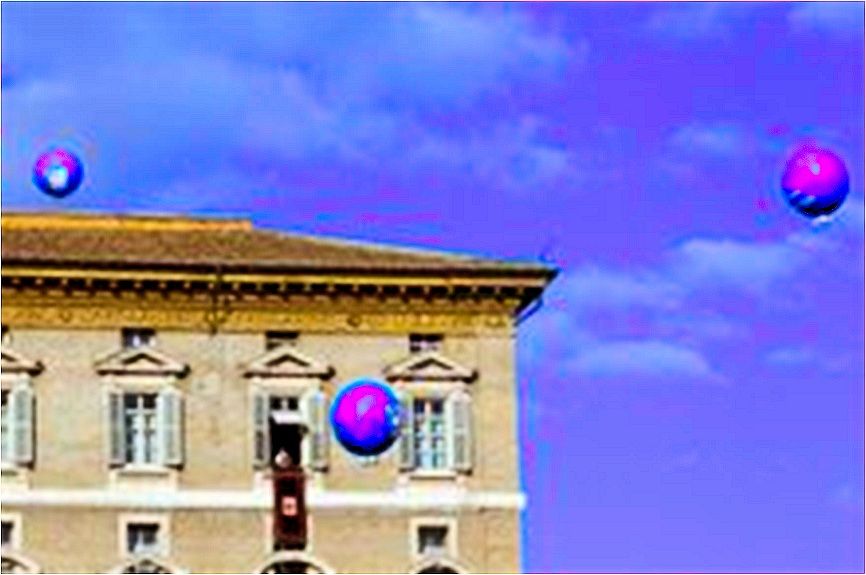

In his address to thousands of pilgrims gathered in Saint Peter's Square for the first Angelus prayer of 2013, Pope Benedict likened the new year to "a journey" and prayed that it may lead on a path to peace "for every person and every family, for each country and for the whole world."
In English, he said:
Today, New Year’s Day, we celebrate the Solemnity of Mary, Mother of God. With affectionate trust, Our Lady believed the message revealed to her by the angel’s word and bore Jesus Christ, true God and true man. May her powerful intercession bring you a happy and prosperous New Year!
He had special words after the prayers for those who wished him well for the New Year, for the European youth gathered in Rome for the Taize Community's annual youth encounter; and for the Italian participants of peace marches held all over Italy yesterday and today.
I express my most hearfelt wishes for teh New Year to everyone. May it truly be a good year, and it will be if we welcome within us and among us the love that Christ gives us.
With gratitude, I express my best wishes to the President of the Italian Republic and to the entire nation, as well as to all the authorities who sent me their holiday greetings.
I renew my affectionate greeting to the young people who came to Rome for the European encounter of the Taize Community.
And I express my spiritual closeness to the church initiatives taken for today's observance of the World Day for Peace. I especially thank those who took part in the national March for Peace which took place last night in Lecce (southern Italy), as well as that held this morning here in Rome under the leadership of the Sant'Egidio Community.
I greet the members of the Movimento dell'Amore Familiare who held a prayer vigil in St. Peter's Square last night, as did their members in Milan and L'Aquila.
To everyone, I repeat the wortds of Jesus: "Blessed are the poeacemakers". [DIM]
Here is a full translation of the Pope's reflection before the prayers:
Dear brothers and sisers,
A happy New Year to everyone! On this first day of 2013, I wish to extend the blessing of God to every man and woman in the world.
I do so with the ancient formulation found in Sacred Scripture: "The LORD bless you and keep you! The LORD let his face shine upon you, and be gracious to you! The LORD look upon you kindly and give you peace!" (Num 6,24-26).
Just as the light and warmth of the sun are a blessing for the earth, so is the light of God for mankind, when he makes his face shine upon us. And this happened with the birth of Jesus Christ. God let his face shine upon us: At the beginning, in a very humble and hidden way - in Bethlehem, only Mary and Joseph and some shepherds were witnersses to this Revelation. But little by little, like the sun which reaches noon after the dawn, the light of Christ grew and spread everywhere.
Already in his brief earthly life, Jesus of Nazareth made the face of God shine over the Holy Land. And then, through the Church inspired by his Spirit, he extended the Gospel of peace to all peoples.
"Glory to God in the highest heavens, and on earth, peace to all men in whom he is pleased" (Lk 2,14). This was the song of the angels at Christmas, and it is the song of Christians under any sky. A song which from hearts and lips passes into concrete gestures, acts of love that build dialog, understanding and reconciliation.
That is why, eight days after Christmasn, when the Church, as the Virgin Mary did, shows the world the newborn Jesus, Prince of Peace, we celebrate the World Day for Peace.
Yes, that Baby, who is the Word of God made flesh, came to bring men a peace that the world cannot give (cfr Jn 14,27). His mission is to bring down the "wall of enmity" (cfr Eph 2,14). And when, on the shores of Lake Galileee, He proclaimed his Beatitutes, one of this was "Blessed are the peacemakers, because they shall be called children of God" (Mt 5,9).
Who are the peacemakers? They are all those who, day after day, seek to conquer evil with good, with the power of truth, with the weapons of prayer and forgiveness, with honest work that is well-done, with scientific research in the service of life, with corporal and spiritual works of mercy.
There are so many peacemakers, but they do not make the news. Like yeast in the dough, they make mankind grow according to God's plan.
On this first Angelus of the new year, let us ask the Most Blessed Mary, Mother of God, to bless us as a mother blesses her children who must leave on a journey. A new year is like a journey: with the light and grace of God, may it be a journey of peace for every man and every family, for every nation, and for the whole world.
 |
| |
 02/01/2013 03:54 02/01/2013 03:54 |
|
| | | OFFLINE | | Post: 26.014
Post: 8.506 | Registrato il: 28/08/2005
Registrato il: 20/01/2009 | Administratore | Utente Master | |
|
 On the World Day for Peace observed by the Church, I am reposting the text of Benedict XVI's message first released last December 14.
On the World Day for Peace observed by the Church, I am reposting the text of Benedict XVI's message first released last December 14.
1. EACH NEW YEAR brings the expectation of a better world. In light of this, I ask God, the Father of humanity, to grant us concord and peace, so that the aspirations of all for a happy and prosperous life may be achieved.
Fifty years after the beginning of the Second Vatican Council, which helped to strengthen the Church’s mission in the world, it is heartening to realize that Christians, as the People of God in fellowship with him and sojourning among mankind, are committed within history to sharing humanity’s joys and hopes, grief and anguish, [1] as they proclaim the salvation of Christ and promote peace for all.
In effect, our times, marked by globalization with its positive and negative aspects, as well as the continuation of violent conflicts and threats of war, demand a new, shared commitment in pursuit of the common good and the development of all men, and of the whole man.
It is alarming to see hotbeds of tension and conflict caused by growing instances of inequality between rich and poor, by the prevalence of a selfish and individualistic mindset which also finds expression in an unregulated financial capitalism.
In addition to the varied forms of terrorism and international crime, peace is also endangered by those forms of fundamentalism and fanaticism which distort the true nature of religion, which is called to foster fellowship and reconciliation among people.
All the same, the many different efforts at peacemaking which abound in our world testify to mankind’s innate vocation to peace. In every person the desire for peace is an essential aspiration which coincides in a certain way with the desire for a full, happy and successful human life.
In other words, the desire for peace corresponds to a fundamental moral principle, namely, the duty and right to an integral social and communitarian development, which is part of God’s plan for mankind. Man is made for the peace which is God’s gift.
All of this led me to draw inspiration for this Message from the words of Jesus Christ: “Blessed are the peacemakers, for they will be called children of God” (Mt 5:9).
Gospel beatitude
2. The beatitudes which Jesus proclaimed (cf. Mt 5:3-12 and Lk 6:20-23) are promises. In the biblical tradition, the beatitude is a literary genre which always involves some good news, a “gospel”, which culminates in a promise.
Therefore, the beatitudes are not only moral exhortations whose observance foresees in due time – ordinarily in the next life – a reward or a situation of future happiness. Rather, the blessedness of which the beatitudes speak consists in the fulfilment of a promise made to all those who allow themselves to be guided by the requirements of truth, justice and love.
In the eyes of the world, those who trust in God and his promises often appear naïve or far from reality. Yet Jesus tells them that not only in the next life, but already in this life, they will discover that they are children of God, and that God has always been, and ever will be, completely on their side. They will understand that they are not alone, because he is on the side of those committed to truth, justice and love.
Jesus, the revelation of the Father’s love, does not hesitate to offer himself in self-sacrifice. Once we accept Jesus Christ, God and man, we have the joyful experience of an immense gift: the sharing of God’s own life, the life of grace, the pledge of a fully blessed existence. Jesus Christ, in particular, grants us true peace, which is born of the trusting encounter of man with God.
Jesus’s beatitude tells us that peace is both a messianic gift and the fruit of human effort. In effect, peace presupposes a humanism open to transcendence. It is the fruit of the reciprocal gift, of a mutual enrichment, thanks to the gift which has its source in God and enables us to live with others and for others.
The ethics of peace is an ethics of fellowship and sharing. It is indispensable, then, that the various cultures in our day overcome forms of anthropology and ethics based on technical and practical suppositions which are merely subjectivistic and pragmatic, in virtue of which relationships of coexistence are inspired by criteria of power or profit, means become ends and vice versa, and culture and education are centred on instruments, technique and efficiency alone.
The precondition for peace is the dismantling of the dictatorship of relativism and of the supposition of a completely autonomous morality which precludes acknowledgment of the ineluctable natural moral law inscribed by God upon the conscience of every man and woman.
Peace is the building up of coexistence in rational and moral terms, based on a foundation whose measure is not created by man, but rather by God. As Psalm 29 puts it: “May the Lord give strength to his people; may the Lord bless his people with peace” (v. 11).
Peace: God’s gift
and the fruit of human effort
3. Peace concerns the human person as a whole, and it involves complete commitment. It is peace with God through a life lived according to his will. It is interior peace with oneself, and exterior peace with our neighbours and all creation.
Above all, as Blessed John XXIII wrote in his Encyclical Pacem in Terris, whose fiftieth anniversary will fall in a few months, it entails the building up of a coexistence based on truth, freedom, love and justice. [2]
The denial of what makes up the true nature of human beings in its essential dimensions, its intrinsic capacity to know the true and the good and, ultimately, to know God himself, jeopardizes peacemaking. Without the truth about man inscribed by the Creator in the human heart, freedom and love become debased, and justice loses the ground of its exercise.
To become authentic peacemakers, it is fundamental to keep in mind our transcendent dimension and to enter into constant dialogue with God, the Father of mercy, whereby we implore the redemption achieved for us by his only-begotten Son. In this way mankind can overcome that progressive dimming and rejection of peace which is sin in all its forms: selfishness and violence, greed and the will to power and dominion, intolerance, hatred and unjust structures.
The attainment of peace depends above all on recognizing that we are, in God, one human family. This family is structured, as the Encyclical Pacem in Terris taught, by interpersonal relations and institutions supported and animated by a communitarian “we”, which entails an internal and external moral order in which, in accordance with truth and justice, reciprocal rights and mutual duties are sincerely recognized.
Peace is an order enlivened and integrated by love, in such a way that we feel the needs of others as our own, share our goods with others and work throughout the world for greater communion in spiritual values. It is an order achieved in freedom, that is, in a way consistent with the dignity of persons who, by their very nature as rational beings, take responsibility for their own actions. [3]
Peace is not a dream or something utopian; it is possible. Our gaze needs to go deeper, beneath superficial appearances and phenomena, to discern a positive reality which exists in human hearts, since every man and woman has been created in the image of God and is called to grow and contribute to the building of a new world.
God himself, through the incarnation of his Son and his work of redemption, has entered into history and has brought about a new creation and a new covenant between God and man (cf. Jer 31:31-34), thus enabling us to have a “new heart” and a “new spirit” (cf. Ez 36:26).
For this very reason the Church is convinced of the urgency of a new proclamation of Jesus Christ, the first and fundamental factor of the integral development of peoples and also of peace. Jesus is indeed our peace, our justice and our reconciliation (cf. Eph 2:14; 2 Cor 5:18). The peacemaker, according to Jesus’ beatitude, is the one who seeks the good of the other, the fullness of good in body and soul, today and tomorrow.
From this teaching one can infer that each person and every community, whether religious, civil, educational or cultural, is called to work for peace. Peace is principally the attainment of the common good in society at its different levels, primary and intermediary, national, international and global. Precisely for this reason it can be said that the paths which lead to the attainment of the common good are also the paths that must be followed in the pursuit of peace.
Peacemakers are those who love,
defend and promote life in its fullness
4. The path to the attainment of the common good and to peace is above all that of respect for human life in all its many aspects, beginning with its conception, through its development and up to its natural end.
True peacemakers, then, are those who love, defend and promote human life in all its dimensions, personal, communitarian and transcendent. Life in its fullness is the height of peace. Anyone who loves peace cannot tolerate attacks and crimes against life.
Those who insufficiently value human life and, in consequence, support among other things the liberalization of abortion, perhaps do not realize that in this way they are proposing the pursuit of a false peace.
The flight from responsibility, which degrades human persons, and even more so, the killing of a defenceless and innocent being, will never be able to produce happiness or peace. Indeed how could one claim to bring about peace, the integral development of peoples or even the protection of the environment without defending the life of those who are weakest, beginning with the unborn?
Every offence against life, especially at its beginning, inevitably causes irreparable damage to development, peace and the environment. Neither is it just to introduce surreptitiously into legislation false rights or freedoms which, on the basis of a reductive and relativistic view of human beings and the clever use of ambiguous expressions aimed at promoting a supposed right to abortion and euthanasia, pose a threat to the fundamental right to life.
There is also a need to acknowledge and promote the natural structure of marriage as the union of a man and a woman in the face of attempts to make it juridically equivalent to radically different types of union; such attempts actually harm and help to destabilize marriage, obscuring its specific nature and its indispensable role in society.
These principles are not truths of faith, nor are they simply a corollary of the right to religious freedom. They are inscribed in human nature itself, accessible to reason and thus common to all humanity. The Church’s efforts to promote them are not therefore confessional in character, but addressed to all people, whatever their religious affiliation.
Efforts of this kind are all the more necessary the more these principles are denied or misunderstood, since this constitutes an offence against the truth of the human person, with serious harm to justice and peace.
Consequently, another important way of helping to build peace is for legal systems and the administration of justice to recognize the right to invoke the principle of conscientious objection in the face of laws or government measures that offend against human dignity, such as abortion and euthanasia.
One of the fundamental human rights, also with reference to international peace, is the right of individuals and communities to religious freedom.
At this stage in history, it is becoming increasingly important to promote this right not only from the negative point of view, as freedom from – for example, obligations or limitations involving the freedom to choose one’s religion – but also from the positive point of view, in its various expressions, as freedom for – for example, bearing witness to one’s religion, making its teachings known, engaging in activities in the educational, benevolent and charitable fields which permit the practice of religious precepts, and existing and acting as social bodies structured in accordance with the proper doctrinal principles and institutional ends of each.
Sadly, even in countries of long-standing Christian tradition, instances of religious intolerance are becoming more numerous, especially in relation to Christianity and those who simply wear identifying signs of their religion.
Peacemakers must also bear in mind that, in growing sectors of public opinion, the ideologies of radical liberalism and technocracy are spreading the conviction that economic growth should be pursued even to the detriment of the state’s social responsibilities and civil society’s networks of solidarity, together with social rights and duties. It should be remembered that these rights and duties are fundamental for the full realization of other rights and duties, starting with those which are civil and political.
One of the social rights and duties most under threat today is the right to work. The reason for this is that labour and the rightful recognition of workers’ juridical status are increasingly undervalued, since economic development is thought to depend principally on completely free markets. Labour is thus regarded as a variable dependent on economic and financial mechanisms.
In this regard, I would reaffirm that human dignity and economic, social and political factors, demand that we continue “to prioritize the goal of access to steady employment for everyone.” [4]
If this ambitious goal is to be realized, one prior condition is a fresh outlook on work, based on ethical principles and spiritual values that reinforce the notion of work as a fundamental good for the individual, for the family and for society. Corresponding to this good are a duty and a right that demand courageous new policies of universal employment.
Building the good of peace through
a new model of development and economics
5. In many quarters it is now recognized that a new model of development is needed, as well as a new approach to the economy. Both integral, sustainable development in solidarity and the common good require a correct scale of goods and values which can be structured with God as the ultimate point of reference.
It is not enough to have many different means and choices at one’s disposal, however good these may be. Both the wide variety of goods fostering development and the presence of a wide range of choices must be employed against the horizon of a good life, an upright conduct that acknowledges the primacy of the spiritual and the call to work for the common good. Otherwise they lose their real value, and end up becoming new idols.
In order to emerge from the present financial and economic crisis – which has engendered ever greater inequalities – we need people, groups and institutions which will promote life by fostering human creativity, in order to draw from the crisis itself an opportunity for discernment and for a new economic model.
The predominant model of recent decades called for seeking maximum profit and consumption, on the basis of an individualistic and selfish mindset, aimed at considering individuals solely in terms of their ability to meet the demands of competitiveness.
Yet, from another standpoint, true and lasting success is attained through the gift of ourselves, our intellectual abilities and our entrepreneurial skills, since a “livable” or truly human economic development requires the principle of gratuitousness as an expression of fraternity and the logic of gift. [5]
Concretely, in economic activity, peacemakers are those who establish bonds of fairness and reciprocity with their colleagues, workers, clients and consumers. They engage in economic activity for the sake of the common good and they experience this commitment as something transcending their self-interest, for the benefit of present and future generations. Thus they work not only for themselves, but also to ensure for others a future and a dignified employment.
In the economic sector, states in particular need to articulate policies of industrial and agricultural development concerned with social progress and the growth everywhere of constitutional and democratic states.
The creation of ethical structures for currency, financial and commercial markets is also fundamental and indispensable; these must be stabilized and better coordinated and controlled so as not to prove harmful to the very poor.
With greater resolve than has hitherto been the case, the concern of peacemakers must also focus upon the food crisis, which is graver than the financial crisis. The issue of food security is once more central to the international political agenda, as a result of interrelated crises, including sudden shifts in the price of basic foodstuffs, irresponsible behaviour by some economic actors and insufficient control on the part of governments and the international community.
To face this crisis, peacemakers are called to work together in a spirit of solidarity, from the local to the international level, with the aim of enabling farmers, especially in small rural holdings, to carry out their activity in a dignified and sustainable way from the social, environmental and economic points of view.
Education for a culture of peace:
the role of the family and institutions
6. I wish to reaffirm forcefully that the various peacemakers are called to cultivate a passion for the common good of the family and for social justice, and a commitment to effective social education.
No one should ignore or underestimate the decisive role of the family, which is the basic cell of society from the demographic, ethical, pedagogical, economic and political standpoints. The family has a natural vocation to promote life: it accompanies individuals as they mature and it encourages mutual growth and enrichment through caring and sharing.
The Christian family in particular serves as a seedbed for personal maturation according to the standards of divine love. The family is one of the indispensable social subjects for the achievement of a culture of peace. The rights of parents and their primary role in the education of their children in the area of morality and religion must be safeguarded. It is in the family that peacemakers, tomorrow’s promoters of a culture of life and love, are born and nurtured. [6]
Religious communities are involved in a special way in this immense task of education for peace. The Church believes that she shares in this great responsibility as part of the new evangelization, which is centred on conversion to the truth and love of Christ and, consequently, the spiritual and moral rebirth of individuals and societies. Encountering Jesus Christ shapes peacemakers, committing them to fellowship and to overcoming injustice.
Cultural institutions, schools and universities have a special mission of peace. They are called to make a notable contribution not only to the formation of new generations of leaders, but also to the renewal of public institutions, both national and international. They can also contribute to a scientific reflection which will ground economic and financial activities on a solid anthropological and ethical basis.
Today’s world, especially the world of politics, needs to be sustained by fresh thinking and a new cultural synthesis so as to overcome purely technical approaches and to harmonize the various political currents with a view to the common good.
The latter, seen as an ensemble of positive interpersonal and institutional relationships at the service of the integral growth of individuals and groups, is at the basis of all true education for peace.
A pedagogy for peacemakers
7. In the end, we see clearly the need to propose and promote a pedagogy of peace. This calls for a rich interior life, clear and valid moral points of reference, and appropriate attitudes and lifestyles. Acts of peacemaking converge for the achievement of the common good; they create interest in peace and cultivate peace.
Thoughts, words and gestures of peace create a mentality and a culture of peace, and a respectful, honest and cordial atmosphere. There is a need, then, to teach people to love one another, to cultivate peace and to live with good will rather than mere tolerance.
A fundamental encouragement to this is “to say no to revenge, to recognize injustices, to accept apologies without looking for them, and finally, to forgive”, [7] in such a way that mistakes and offences can be acknowledged in truth, so as to move forward together towards reconciliation. This requires the growth of a pedagogy of pardon. Evil is in fact overcome by good, and justice is to be sought in imitating God the Father who loves all his children (cf. Mt 5:21-48).
This is a slow process, for it presupposes a spiritual evolution, an education in lofty values, a new vision of human history. There is a need to renounce that false peace promised by the idols of this world along with the dangers which accompany it, that false peace which dulls consciences, which leads to self-absorption, to a withered existence lived in indifference. The pedagogy of peace, on the other hand, implies activity, compassion, solidarity, courage and perseverance.
Jesus embodied all these attitudes in his own life, even to the complete gift of himself, even to “losing his life” (cf. Mt 10:39; Lk 17:33; Jn 12:25). He promises his disciples that sooner or later they will make the extraordinary discovery to which I originally alluded, namely that God is in the world, the God of Jesus, fully on the side of man.
Here I would recall the prayer asking God to make us instruments of his peace, to be able to bring his love wherever there is hatred, his mercy wherever there is hurt, and true faith wherever there is doubt.
For our part, let us join Blessed John XXIII in asking God to enlighten all leaders so that, besides caring for the proper material welfare of their peoples, they may secure for them the precious gift of peace, break down the walls which divide them, strengthen the bonds of mutual love, grow in understanding, and pardon those who have done them wrong; in this way, by his power and inspiration all the peoples of the earth will experience fraternity, and the peace for which they long will ever flourish and reign among them.[8]
With this prayer I express my hope that all will be true peacemakers, so that the city of man may grow in fraternal harmony, prosperity and peace.
From the Vatican
8 December 2012
 NOTES:
NOTES:
[1] Cf. SECOND VATICAN ECUMENICAL COUNCIL, Pastoral Constitution on the Church in the Modern World, Gaudium et Spes, 1.
[2] Cf. Encyclical Letter Pacem in Terris (11 April 1963): AAS 55 (1963), 265-266.
[3] Cf. ibid.: AAS 55 (1963), 266.
[4] BENEDICT XVI, Encyclical Letter Caritas in Veritate (29 June 2009), 32: AAS 101 (2009), 666-667.
[5] Cf. ibid, 34 and 36: AAS 101 (2009), 668-670 and 671-672.
[6] Cf. JOHN PAUL II, Message for the 1994 World Day of Peace (8 December 1993): AAS 86 (1994), 156-162]
[7] BENEDICT XVI, Address at the Meeting with Members of the Government, Institutions of the Republic, the Diplomatic Corps, Religious Leaders and Representatives of the World of Culture, Baabda-Lebanon (15 September 2012): L’Osservatore Romano, 16 September 2012, p. 7.
[8] Cf. Encyclical Letter Pacem in Terris (11 April 1963): AAS 55 (1963), 304.
[Modificato da TERESA BENEDETTA 02/01/2013 16:28] |
| |
 02/01/2013 04:48 02/01/2013 04:48 |
|
| | | OFFLINE | | Post: 26.015
Post: 8.507 | Registrato il: 28/08/2005
Registrato il: 20/01/2009 | Administratore | Utente Master | |
|
 Benedict XVI understands that the wars of the world
Benedict XVI understands that the wars of the world
are still fought in the minds and hearts of men.

January 01, 2013
“The Church represents the memory of what it means to be human in the face of a civilization of forgetfulness, which knows only itself and its own criteria. Yet just as an individual without memory has lost his identity, so too a human race without memory would lose its identity.”
— Pope Benedict XVI
Christmas Greetings to the Roman Curia, December 21, 2012.
“I would say that the Christian can afford to be supremely confident, yes, fundamentally certain that he can venture freely into the open sea of the truth, without having to fear for his Christian identity. To be sure, we do not possess the truth, the truth possesses us; Christ, who is the truth, has taken us by the hand, and we know that his hand is holding us securely on the path of our quest for knowledge.”
— Pope Benedict XVI
Christmas Greetings to the Roman Curia, December 21, 2012.
I.
Each year the Holy Father gives a significant lecture to the Roman Curia about the events of the previous year. In this year’s account, Benedict spent time recalling his trips to Mexico, Cuba, and Lebanon.
In the course of a year, the modern Popes probably see more important (and “unimportant”) people in the world than any other public figure. Their trips to various countries are usually major events in those countries. It is said that John Paul II was seen in person by more human beings than any man in history.
In introducing Pope Benedict, Cardinal Sodano recalled the liturgical antiphon: “ Propre est jam Dominus, venite adoremus" – The Lord is near, come let us adore Him.
The Child in the stable in Bethlehem, Benedict continues, “is God himself and has come so close as to become a man like us.” Benedict never hesitates to identify Christ as true God and true man. These very words — "the Child is God Himself” — defy and challenge the whole world by affirming its truth.
Benedict made a most interesting remark about Cuba: “That country’s search for a proper balancing of the relationship between obligations and freedom cannot succeed without reference to the basic criteria that mankind has discovered through encounter with the God of Jesus Christ.”
One presumes that, if that statement is true for Cuba, it will be true for other lands, including our own. Evidently, mankind has learned something about obligation and freedom from its dealing with the reality of Christ. Essentially it is that no freedom exists without corresponding obligation. Likewise, an obligation that is not freely accepted is more like determinism or coercion than free responsibility.
II.
To the Curia, Benedict devotes considerable discussion to two topics: the family and the meaning of dialogue. The meeting on families in Milan gave the Holy Father an opportunity to reflect on the nature of the family and the modern effort to eliminate it as the central institution of human life.
Many questions come up about the family with which we must be familiar: “First of all there is the question of the human capacity to make a commitment or to avoid commitment. Can one bind oneself to a lifetime? Does this correspond to man’s nature? Does it not contradict his freedom and the scope of his self-realization? Does man become himself by living for himself alone and only entering into relationships with others when he can break them off again at any time? Is lifelong commitment antithetical to human freedom?”
These are the common questions that we hear when we try to justify divorce or infidelity of various sorts. They are rooted in an individualism that does not see human perfection as a relationship of commitment to others, including to God Himself.
But Benedict brings up something of great profundity about the nature of the modern attack on marriage. Evidently, the Pope has been reading a reflection on marriage by the Chief Rabbi in France, Gilles Bernheim. Rabbi Bernheim points out that the current attack on the family, child, and marriage is not just rooted in a false notion of freedom. This latter view has been characteristic of much modern opposition to permanent marriage. Now the issue goes to the very nature of what a human being is, not just his freedom.
What is questioned is the being of man as we have known it. It is only if we deny the being of man that we can embrace views of human relations that undermine the structure of man.
Traditionally, Rabbi Bernheim notes, to be a human being meant to be born “of woman.” Chesterton noted somewhere what a terrible thing it would be if we were “born of man.” But today, the notion of gender is not something of given fact but of choice. What one is born as makes no difference.
“Sex is no longer a given element of nature that man has to accept and personally make sense of; it is a social role that we choose for ourselves.”
If man is born of woman, the role chosen for him is essential to his own good. But if we conceive “being given ourselves” to be a denial of our “freedom,” we must develop a theory that denies our given nature. We thus have to choose our “gender”, whatever it be.
Of this view, Benedict states: “The profound falsehood of this theory and of the anthropological revolution contained within it is obvious.” This obvious falsity, however, does not prevent individuals and governments from choosing it.
People deny they have a “nature” that derives from the fact of the body (and soul) given to them at conception and birth. They want to “make” themselves with no relation to God or nature. They will seek to prove that nothing in them has an origin from anything but themselves.
“According to the biblical creation account, being created by God as male and female pertains to the essence of human nature.” The male and female division of human beings is essential to human nature as such. This duality is now questioned.
What are the consequences of this new view? It is the belief that it was “not God who created us male and female.” What did this was “society,” whose authority we now also deny We decide for ourselves.
“Man calls his nature into question. From now on he is merely spirit and will.” This is a new form of what Maritain once called “angelism.” The body has nothing to do with our soul and spirit. Will is everything, shades of Nietzsche. We need not account for our body, let alone see in it as part of our own real good.
The Pope points out that now we are manipulating human nature, a manipulation often pursued by the same people who are up in arms about manipulating the environment. They oppose manipulating the latter but demand that we manipulate human nature.
One can only stand in awe at the force of the Pope’s mind as he examines the logic of these views of gender. “From now on there is only the abstract human being who chooses for himself what his nature will be. Man and woman in their created state as complimentary versions of what it means to be human are disputed.”
Yet, we are not just spirit and will but we are persons with body and soul in one whole. We are a unified being, all aspects of which belong together in a harmonious whole
Benedict proceeds to draw out the logic of this denial of the normalcy of male and female in one nature. “But if there is no preordained duality of man and woman in creation, then neither is the family any longer a reality established by creation. Likewise the child has lost the place he had occupied hitherto and the dignity pertaining to him.”
The dignity of the child is that it is a gift, not the product of human engineering or ownership. He is a good in his own being.
“Bernheim shows that now, perforce, from being a subject of rights, the child has become an object to which people have a right and which they have a right to obtain. When the freedom to be creative becomes the freedom to create oneself, then necessarily the Maker himself is denied and ultimately too man is stripped of his dignity as a creature of God…. The defense of the family is about man himself…. When God is denied, human dignity also disappears. Whoever defends God is defending man.” (See Schall, “On the ‘Right to Be Born,’” in Political Philosophy and Revelation, The Catholic University of America Press, forthcoming 2013).
If we maintain that someone, male or female, has an independent “right” to a child apart from the stable male-female marital relation, it follows that any arrangement in which a child can be obtained — in vitro, cloning — is merely the exercise of one’s rights.
The child, who ought to be the center of the issue, is deprived of his own need of father and mother, of his own dignity. What comes first is not the child but oneself, the complete opposite of the natural order. But that is the logic of the I-me-myself narcissistic culture that now dominates the West!]
III.
Benedict next takes up the issue of dialogue. It is a confused area. The noble Platonic notion has become — if not useless in a world of relativism in which no truth can be found — at least a justification for endless discussions that decide very little.
Benedict sees three areas of dialogue: with the state, with society, and with religion. When civilizations forget what man is, the Church becomes the memory of mankind, of what man is. What the Church knows from its experience is relevant to non-believers.
Benedict draws a delicate line here. Knowing the almost impossible task of discussing theological issues publicly, particularly with Muslims, he grants that dialogue still must find some basis of agreement about common problems. Still, any dialogue will lead in some way to fundamental issues.
“A dialogue about peace and justice is bound to move beyond the purely pragmatic, to become an ethical struggle for the truth and for the human being.…” What began as a pragmatic issue does bring up the question of what is the right way to live and why.
Two reasons are given for dialogue among those whom we are not seeking to change.
“1) Dialogue does not aim at conversion, but at understanding. In this respect it differs from evangelization, from mission. 2) Accordingly, both parties to the dialogue remain consciously within their identity, which the dialogue does not place in question either for themselves or for others.”
These principles, of course, strike us as being a long way from Plato’s understanding of dialogue. The Pope himself finds problems with them. “I find them too superficial. True dialogue does not aim at conversion, but at better mutual understanding — that is correct. But all the same the search for knowledge and understanding always has to involve drawing close to the truth.”
A Christian cannot say that his discussion blocks out any approach to the truth. “I would say that the Christian can afford to be supremely confident, yes, fundamentally certain that he can venture freely into the open sea of truth, without having to fear for his Christian identity.”
He can do this because reason open to revelation and revelation addressed to reason constitute a grounding in what it is that unifies our knowledge and sees the truths in other views together with their limitations.
The Church exists in part so that we do not forget who and what we are. It sees that the most fundamental institution of society, the family, is now an object of complete elimination, and the relations that are associated with the family, the most fundamental ones, are left without grounding in nature or being.
The dialogue with any of the disparate religions and philosophies of our time cannot ultimately forget that truth is the direction in which all reason tends. When Socrates said that dialogue taught him what he did not know, he only reached this conclusion after eliminating many positions that were in fact not true.
Dialogue may not be conversion but the establishment of any truth or the rejection of any error remains a central task. The wars of the world are still fought in the minds and hearts of men. Benedict quite clearly understands this fact.
 Perhaps it is just a coincidence that there is another major article by Fr. Schall out today, January 1, 2013, online, this time in a secular conservative journal. But it could also mean that his recent retirement from his teaching job at Georgetown University gives him more time now to exercise his mind in the service of God and his readers! The mind of Schall is obviously exceptional, the more so because, unlike many of his fellow Jesuits, he applies it to the illumination of orthodox Catholic thinking (always in the light of classic philosophy, as well), not to assert some Jesuitic and typically egoistic sophistry in the guise of scholarship or plain dissent!
The universe we know in
Perhaps it is just a coincidence that there is another major article by Fr. Schall out today, January 1, 2013, online, this time in a secular conservative journal. But it could also mean that his recent retirement from his teaching job at Georgetown University gives him more time now to exercise his mind in the service of God and his readers! The mind of Schall is obviously exceptional, the more so because, unlike many of his fellow Jesuits, he applies it to the illumination of orthodox Catholic thinking (always in the light of classic philosophy, as well), not to assert some Jesuitic and typically egoistic sophistry in the guise of scholarship or plain dissent!
The universe we know in
by Rev. James V. Schall, S.J.

January 1, 2013
Socrates was fond of repeating the advice of the Oracle: “Know thyself.” He probably said, “Know thyself,” rather than, “Know the world,” because it is more difficult to know oneself than to know the world.
Self-introspection yields not ourselves, but something approaching infinity beyond ourselves. The first thing we know about ourselves is that we have a faculty whereby we know. Yet, we did not give this strange knowing power to ourselves. We wonder perhaps why we have it.
Plato, in fact, thought that the universe was not complete unless within it something existed that could understand it. To him, it was almost as if the universe, being spoken, needed to be spoken back, rearticulated for what it was.
Such a view presupposes that within the universe itself is found an intelligibility that makes this specific universe to be what it is rather than some other one that may be possible. This intelligibility is not put there by the human mind but is found there already and is coherent, however long and laborious the process of discovery may be.
In our intellectual comprehension of things, we stand outside the ongoing complexity of what the universe is. Yet, as existing beings within it, we clearly also belong to the universe. Human beings may be an anomaly, but we are here with as much title as any other being in the universe including the universe itself.
We do not much worry that this cosmos might in fact not be as it appears or that it might be configured differently. We find intelligibility in the universe; we do not put it there. The fact that we can speak of a “drama” of the universe implies that it reveals a plot of some kind. We wonder what sort of evidence there might be for its meaning.
As Christians, we have an explanation of the universe and our place within it. It comes to us, as it were, on good authority. We can look on and understand this explanation as it is revealed to us. When we have spelled this overall plan out, we can ask also, using our minds, whether it fits in with what we can know and figure out by ourselves through our science and intuition.
The first thing to recognize is that the universe, the cosmos, what is called in Genesis “the heavens and the earth,” need not exist. God is not part of creation. He stands outside of it. He does not need it unless He so wills. The universe depends on Him; He does not depend on it.
Aristotle once hinted that the world existed because God was lonely, that He lacked what is best in us, namely, the relation to and friendship with others. Thus, in this view, the world exists because God lacked something. If this position were true, God would be less than God.
But creation does not teach this dependency of God. It teaches the opposite. God is not lonely. Still, Aristotle had reason for thinking as he did. What he lacked was an understanding of the inner life of God, something not known except to the Godhead itself.
Many things in Aristotle are right about God. His God even seems to have some care for the world. He does move also by love and desire as a final cause. But it was only the doctrine of the Trinity that fully explained the sense of Aristotle’s concern. If there is love and inner friendship within God, then He would have no need to create to make up a deficiency. It does not follow from this position, however, that God lacked a reason to create, or that He did not create out of love. It only means that He did not create out of inner necessity of His own.
When it comes to the making of things, the first philosophical principle is that the first thing in intention is the last thing in execution. Moreover, the last thing in execution is what is the reason for creation in the first place.
What I am concerned about here is the overall structure of the universe, but this “structure,” as it were, is itself dependent on why it exists in the first place. When Cicero said our distinguishing characteristic is reason, whatever its source, he meant that it was the activity of this faculty of our soul that was meant to be fully activated for the universe to be completed.
Christianity would not disagree with this view. It would add that reason is open also to what is revealed to it from the source of reason itself if that origin should choose to act. Evidently, all beings with reason in their nature can communicate with each other at some level.
Revelation is mind speaking to mind. Revelation is not primarily intended to confuse man, but to enlighten him about what is. It does this in a peculiar way, for revelation comes to us more fully through redemption than creation. Yet, creation already sets forth the grounds whereby redemption might be necessary that the initial purpose of God in creation is to be attained.
Creatio ex nihilo
The cosmos itself, it appears, came into being, with time and space, between 13 and 14 billion years ago. In one sense, this seems like a long time ago, but in another sense it is a finite period, not an infinite one.
Some earlier theories of cosmic origin wanted to maintain that the origin was in an infinite time past, which theoretically would allow for many kinds of experiments to take place for configuring the world as it is.
The evidence seems now clear that the cosmos began with what is called a “big bang” in which everything in its physical structure is present in principle. This fact requires the existence of a super-intelligence outside the universe.
What is remarkable about this beginning is that it could not have originated from “nothing.” This fact indicates that its origin must have been with an all knowing being that understood the structure of the world and placed its order within it to be worked out in space and time.
The world contains beings that can act in various ways, including rational ways. While God may be necessary to explain why being remains present at all times, this does not prevent there also existing within the cosmos beings who exercise their own relative autonomy and power.
There are secondary causes in the world as it exists. Time and place are real, not just figments of our imagination. God is powerful enough that He creates beings that can also be free and act in their own right. Indeed, this fact gets us to the very purpose of creation in the first place and hence the reason why the cosmos exists in both its simplicity and complexity, in its size and grandeur.
Aquinas tells us that the eternal law is the order of things outside of God as they exist initially or eternally in the mind of God. God can create “images” of Himself outside of Himself. These images, these persons, are created for their own sakes, but likewise as beings that are offered something beyond the powers of their own nature.
This is why C.S. Lewis once said that we have never met a mere mortal. And indeed, we have never met a mere immortal. What we have met are individual human persons, each unique, each created freely in order that each might freely accept the participation offered to him to live, after his fashion, the inner life of the Godhead, eternal life.
The cosmos exists that an arena to carry out this purpose might be spread out in space and in time. Looked at from this angle, the cosmos, while majestic in itself, bears nowhere near the fascination as is carried out in the four score years and ten that is figuratively given to each person.
And yet, what we now call the salvation of each person takes place within a world that we seek to understand and order, that we seek to know. In studying the cosmos, what seems now clear is that it did not cause itself, nor did it come about by accident from nothing.
In addition, the cosmos seems to bear clear signs that its very structure was so ordered that rational life would be possible at some place or some places in the universe. The various constants that go to make up the anthropic principles that make life possible and keep it in being seem much too finely honed to be mere accidents. Rather, they reveal purpose already within the structure of the cosmos from its beginning.
The cosmos exists so that free and rational beings might live to carry out their own purpose.
From this background, it follows that what is important about the cosmos is not so much its existence as its grounding of human life for sufficient time that it might decide what it is about. It is not designed to go on forever in its present form.
Moreover, if we look at the central doctrine of Christianity, that of the resurrection of the body, we are led to suspect from what we can ascertain from Christ’s resurrection and from what Paul says about the earth itself awaiting its redemption that the cosmos is kept in existence even when its purpose is achieved in the redemption of our souls.
So I have called these remarks, “the universe we know in.” It is in this universe that we are given the powers to know what we are and why we exist. It is also the arena of our working out how we will stand to the universe, its purpose and its origin.
We are given from within the universe even the Incarnation of the Son of God not merely for the redemption of our sins but for the completion of the work of the Father in the beginning.
It is sometimes astonishing to realize how little evidence for atheism there really is. But it is equally astonishing to realize how much evidence for pride exists among us, for the effort to create our own world apart from the world that really exists is ever present.
We can be sure that if, as the Psalm says, “the Lord does whatever He wills,” He never wills to complete His initial purpose in offering us eternal life apart from our willingness to receive it. Perhaps this purpose has something to do with the length of time and the largeness of space what we now look out on and back on.
The Lord not only “summons the clouds from the ends of the earth,” He calls upon us to wonder about the fiery ends of this earth and of our place within it.
[Modificato da TERESA BENEDETTA 02/01/2013 05:48] |
| |
 02/01/2013 07:20 02/01/2013 07:20 |
|
| | | OFFLINE | | Post: 26.016
Post: 8.508 | Registrato il: 28/08/2005
Registrato il: 20/01/2009 | Administratore | Utente Master | |
|
 Pope Benedict’s momentous 2012
Pope Benedict’s momentous 2012
In the seventh year of his pontificate,
the Holy Father was as vital as ever.
by EDWARD PENTIN

VATICAN CITY. Dec. 31, 2012 — For Pope Benedict XVI, 2012 has been a year of momentous events: two consistories, a trip to Cuba and the 50th anniversary of the opening of the Second Vatican Council, to name just a few. [I'd say the 'momentous' events also include the fact that he turned 85, a significant age milestone for anyone - only five other Popes have lived longer than he has at this point - and completed the first seven years (and just a few months short now of completing eight years) of a Pontificate few had thought would last as long as it has so far.]
Here, we take look back on seven of the top events during this pontifical year.
Two consistories
This was the year in which the Holy Father awarded two New Yorkers a red hat: Archbishops Timothy Dolan of New York and Edwin O’Brien, grand master of the Equestrian Order of the Holy Sepulchre of Jerusalem. They were among 22 distinguished Churchmen to be made cardinals at a consistory in Rome on Feb. 18.
But the appointments were criticized for being top-heavy with European cardinals, leading to the Holy Father calling for another mini consistory in November (two consistories are very rarely held in one year).
During the fall cardinal-making ceremony, all the bishops who were conferred the title were from outside Europe and included the American curial Archbishop James Harvey. This was the fifth time Benedict has created new cardinals, and he has now elevated 90 to the College of Cardinals, significantly influencing who will be elected his eventual successor.
Bishops' Synodal Assembly on the New Evangelization
The establishment of a special Church commission to defend religious liberty, a pastoral document on how to encounter Jesus Christ, and a new apologetics of Christian thought were just some of the fruits that came out of the Synod of Bishops on the New Evangelization, which took place Oct. 7-28.
Reflecting on the three-week meeting at the Vatican, the Holy Father said the meeting was “really uplifting, comforting and encouraging.”
“With renewed enthusiasm, it seems to me, we are on our way,” he said. Cardinal Donald Wuerl, general rapporteur of the meeting, said a great sense of unity characterized the meeting, but that its success would depend largely on how the local Church implements its recommendations.
Year of Faith begins on the 50th anniversary
of the opening of Vatican II
Pope Benedict XVI opened the Year of Faith in Rome Oct. 11 with a call for a New Evangelization rooted in an authentic interpretation of the documents of the Second Vatican Council. The Council opened 50 years ago that very day. The Pope stressed that “reference to the documents saves us from extremes of anachronistic nostalgia and running too far ahead.”
He also issued a new reflection on the Council, recalling it as a “moment of extraordinary expectation.” The Council Fathers, the Pope wrote, “neither could nor wished to create a different faith or a new Church,” but, rather, to “renew them.”
“This is why a hermeneutic of rupture is absurd and is contrary to the spirit and the will of the Council Fathers,” he added.
The Year of Faith runs until Nov. 24, 2013.sine qua
[Both Francis Rocca at CNS and Pentin fail to point out the significance of Benedict XVI's personal participation in Vatican II as a sine qua non of his pronouncements and actions regarding the Council, nor the fact that the publishers of The Collected Writings of Joseph Ratzinger did come out, in time for the Golden Jubilee of the Council upening, with a two-volume anthology of everything he wrote about Vatican II before he became Pope. Benedict XVI lived the Council - it necessarily imprinted itself on the early years of his academic career and gave him a deep involvement in the Church as Church that few other theology professors in his time could have had. And he remains as passionate about Vatican-II today at a distance of half a century.]
Voyages to Mexico and Cuba
From March 23-29, 2012, the Pope made the first of just two apostolic voyages outside Italy this year: to Mexico and Cuba. In Mexico, he urged the people to maintain their faith and continue to turn to the Virgin Mary in the face of violence and chaos caused by the country’s deadly drug war. He then visited Cuba, saying the country needs change, but adding that it will only happen if citizens are able to freely seek truth, fraternity and reconciliation.
The Pope stressed the Church doesn’t call for privileges, but, rather, for the right to practice its faith openly. He strongly rejected communism, saying it had failed Cuba and no longer corresponds to reality. The visit included a half-hour meeting with an ailing Fidel Castro. The Pope managed to persuade the Cuban government to re-introduce a public holiday on Good Friday.
[I think that the proportions of the popular turnout in Mexico and Cuba for the Pope were significant elements of the trip, especially given that the media - in Mexico and elsewhere - had claimed he would never attract the crowds that his predecessor did in Mexico. Yet look at the massive turnout for him in a fairly backwater central province of Mexico - imagine if he had been able to tolerate the altitude of Mexico City and had been able to visit Guadalupe! The turnout in Cuba was similarly impressive, plus the fact that President Raul Castro saw fit to attend every liturgy celebrated by the Pope1 I do not know whether the Cuban media covered John Paul II's visit there as extensively as they did Benedict XVI's visit, but the coverage in Cuba's official newspapers and on Cuban TV was certainly exceptional.]
Trip to Lebanon
Benedict XVI flew into Beirut for a three-day visit to the Middle Eastern country in September, despite a bloody internecine war in Syria and riots across the Islamic world reportedly in reaction to an anti-Islam movie posted on YouTube. The main purpose of the visit was to sign and deliver his apostolic exhortation on the Church in the Middle East — the Pope’s reflections on the synod on the same theme that took place in the Vatican in October 2010.
The Holy Father was largely greeted enthusiastically by Muslims and Christians in the country, the most pluralist of all Middle East countries, with a large Christian population. He made impassioned pleas for peace, reconciliation and interreligious harmony in the region and appealed to Christians not to emigrate.
Jesus of Nazareth, Vol. 3
The final volume of Pope Benedict XVI’s trilogy on JESUS OF NAZARETH went on sale in the United States and in 50 countries Dec. 4, in nin e language editions. Focusing on The Infancy Narratives, it is much smaller than the previous two volumes, numbering just 144 pages.
The Pope says he prefers to see it as “a sort of small ‘antechamber’ to the two preceding volumes on the figure and message of Jesus of Nazareth” and adds that he has sought “to interpret, in dialogue with exegetes of the past and of the present, what Matthew and Luke recount at the beginning of their Gospels about the infancy of Jesus.” Initial reviews were positive, with readers describing it as lucid and accessible.
Pope takes to Twitter
Having advocated using modern forms of social media to spread the Gospel message, 2012 was the year the Pope took the famous micro-blogging site by storm. His first tweet on Dec. 12 was: “Dear friends, I am pleased to get in touch with you through Twitter. Thank you for your generous response. I bless all of you from my heart.” He then proceeded to answer three questions from fellow tweeters on the faith in the context of the Year of Faith. The Holy Father quickly racked up more than a million followers within a week of the launch of his account, called @Pontifex.
Vatileaks
Paolo Gabriele, the Pope’s former valet, was jailed for 18 months [Not 18 months - only a few weeks, in effect, though he was sentenced to 18 months!] for leaking hundreds of private documents from the Pope’s office. Gabriele insisted he committed the crime out of love for the Pope [Actually, he never once said that! What he has said again and again is that he did it for 'love of the Church' - at least he did not claim 'love for the Pope' as a motive, because his act of betraying the Pope by stealing his private correspondence was cedrtainly not an act of love, not even of deluded love! And because he did much worse even: by thinking so little of the Pope that he 'believes' he was not just misinformed but uninformed about events in the Vatican and the Church, and that he was therefore prey to manipulation by those around him] and to uncover corruption in the Vatican. The Pope was reported to have been shocked and saddened by Gabriele’s actions but wished to see justice done. The Pope extended a pardon to his former valet just days before Christmas.
To reduce Vatileaks to the perspective of Paolo Gabriele is absurd. But then, the media perspective has been primarily shaped by wishful thinking, namely, that someone from within the system (be it ever so lowly as a valet with megalomaniacal delusions) 'confirms' to them by his words what he fails to substantiate by any of the documents he pilfered, namely that 'there is evil and corrruption everywhere in the Vatican'. This is seen by the media as a resounding validation of their facile cliche about 'rot within the Church', extrapolating the actions of a relatively few rotten apples to a general condemnation of anyone who works within the Church. Vatileaks goes beyond the question of crass betrayal of the Pope by his own valet - nor even the power games played in the upper reaches of the hierarchy, par for the course, after all, in any bureaucracy - but into the question of truth itself. Do the reporters covering tbe Vatican - and all those who make a a living commenting about Vatican and Church affairs - consider the unsubstantiated statements of Mons. Vigano and Paolo Gabriele the equivalent of 'facts'? They apparently do, because not one has lifted a finger to try and substantiate - or disprove - the allegedly active, concrete and ubiquitous presence of 'evil and corruption' in Benedict XVI's Vatican! Bureaucratic ineptitude even if it exists on a massive scale is not synonymous to 'evil and corruption'... One might expect someone gung-ho like John Allen to undertake that initiative - it could certainly earn him a Pulitzer or a Peabody if he did uncover anything serious and substantial - but the fact that no one even tries would seem to indicate they know they are not likely to find any telltale smoking guns or outrageous skeletons in the closet in Benedict XVI's Vatican (though they ignored such signs like the cases of Cardinal Groer and Father Maciel in the previous Pontificate, you would think they would have learned a lesson by now to speak out when you have something factual to say!) Un short, Vatileaks says much worse of the willful misdirection, intellectual dishonesty and blindness of the media than it does about the long-standing inefficiencies, shortcomings and errors of the Vatican bureaucracy.
[Modificato da TERESA BENEDETTA 02/01/2013 22:51] |
| |
 02/01/2013 14:55 02/01/2013 14:55 |
|
| | | OFFLINE | | Post: 26.017
Post: 8.509 | Registrato il: 28/08/2005
Registrato il: 20/01/2009 | Administratore | Utente Master | |
|
 A child's-eye view of
A child's-eye view of
the Pope at prayer
by Elizabeth Lev

ROME, Jan. 1, 2013 (ZENIT.org) — What does one give the Pope for Christmas? Somehow appliances seem inappropriate, altarpieces and reliquaries have been done to the point of overkill, and food, cash and other sundries will be immediately re-gifted.
It takes a truly creative mind to come up with the perfect papal present.
Therefore, it should not be surprising that the best pontifical stocking stuffer was produced by Rome’s reigning queen of painting, Natalia Tsarkova, papal portraitist to John Paul II and Benedict XVI, as well as executrix of the only official portrait of the short-lived Pope John Paul I.
 Tsarkova's portraits of Benedict XVI: left, 2006, oil on wood, 40x50 cm; right, 2007, oil on canvas, 120x180 cm.
Tsarkova's portraits of Benedict XVI: left, 2006, oil on wood, 40x50 cm; right, 2007, oil on canvas, 120x180 cm.
This Christmas, however, instead of using her formidable talent to compose monumental canvases of men and events that shaped the world, Tsarkova gave the Pope (and us) a chance to see through the eyes of a child in her fairy tale book, Il Mistero del Piccolo Stagno— (The Mystery of the Little Pond)_ released by the Vatican’s own publishing house on Dec. 11.
The brightest stars of the Vatican firmament assembled for the presentation of the volume. Msgr. Georg Gänswein, recently named prefect of the Papal Household, and Prof. Antonio Paolucci, director of the Vatican Museums, joined Dr. Saverio Petrillo, director of the papal villa of Castelgandolfo, and Father Giuseppe Costa, head of the Vatican Publishing House, to celebrate the latest oeuvre of this petite Russian artist who herself possesses a disarmingly childlike air.
Prelates, scholars and administrators all turned their gaze to the little pool in Castelgandolfo where Tsarkova’s story unfolds.
The painter’s opulent palate, much admired in her altarpieces and portraits, and one of the gifts of Russian training, draws the reader into the waters of one of the fountains of Castelgandolfo, the Pope’s summer residence, where we meet Bianco, a young goldfish born in these quiet waters. Bianco loves the light and colors reflected in his pool as if he lives within a Renoir painting.
In his life of riotous color, Bianco is one day struck by the presence of white, the reflection of the statue of Mary gracing the edge of the pool. Both the fish and his father are drawn daily to the still, luminous figure.
One day, a second figure in white appears before the statue; it is Benedict XVI who has come to pray the Rosary. Afterwards, the Roman Pontiff stops to feed the fish with breadcrumbs. From this day forth, Bianco lives in expectation of the Pope’s visits.
Tsarkova reveals a side of Benedict that the media, with all of their sophisticated cameras and expensive analysts, have never been able to glimpse. Bianco sees a quiet figure who prays for all of us in the solitude of the papal villa. He knows the gentle man who loves nature and its creatures. The luminous presence of the Pope brings both joy and solace to those who look with the eyes of innocence.
When the Pope departs the villa to return to Rome in the fall, Bianco feels bereft, much like we Romans feel when the Pope leaves for the summer, or the world felt when John Paul II died. But the fish is comforted that the figure in white will always return. We are never without a Holy Father for long, the story reminds us; for 2,000 years the successors of St. Peter have prayed for us and will continue to do so.
Tsarkova’s glorious images that illustrate the volume evoke a sense of peace; only the brilliant tracings of fiery ginger or glowing opal convey the intensity Bianco’s devotion.
For the moment, the book is only in Italian, but this story is best told with pictures as Bianco gives us this intimate, child’s-eye view of Christ’s Vicar on Earth.
All of Tsarkova's papal portraits (including 5 of JPII) can be seen on
http://www.nataliatsarkova.net/galleria.asp?sel=1[Modificato da TERESA BENEDETTA 02/01/2013 14:56] |
| |
 02/01/2013 15:49 02/01/2013 15:49 |
|
| | | OFFLINE | | Post: 26.018
Post: 8.510 | Registrato il: 28/08/2005
Registrato il: 20/01/2009 | Administratore | Utente Master | |
|

 In the Church calendar, the Christmas season runs to the Feast of the Epiphany. According to the USCCB nomenclature, the weekdays after the Octave of Christmas, which ended yesterday, are called 'Christmas Weekdays'.
Wednesday, January 2, Christmas Weekday
In the Church calendar, the Christmas season runs to the Feast of the Epiphany. According to the USCCB nomenclature, the weekdays after the Octave of Christmas, which ended yesterday, are called 'Christmas Weekdays'.
Wednesday, January 2, Christmas Weekday
MEMORIAL OF SAINTS BASIL THE GREAT & GREGORY NAZIANZENE
 From left: Basil and Gregory; St. Basil; St. Gregory; and the two saints with St. John Chrysostom - celebrated in the Orthodox Churches as the "Three Hierarchs' with their joint feast on January 25
SAINTS BASIL THE GREAT (Asia Minor, 330-379) and GREGORY NAZIANZENE (Asia Minor, 330-390)
From left: Basil and Gregory; St. Basil; St. Gregory; and the two saints with St. John Chrysostom - celebrated in the Orthodox Churches as the "Three Hierarchs' with their joint feast on January 25
SAINTS BASIL THE GREAT (Asia Minor, 330-379) and GREGORY NAZIANZENE (Asia Minor, 330-390)
BISHOPS, THEOLOGIANS AND DOCTORS OF THE CHURCH
Apart from the fact that they were friends from youth and lead almost parallel lives, I have not immediately found an explanation for why they have the same feast day. Both born in what is now central Turkey, they studied together in Cappadocia, and much later, in Athens. Both were engaged in the great battle against Arian heresy. Basil, as Bishop of Cappadocia, also distinguished himself for spelling out what Benedict XVI called 'the first social doctrine of the Church'. Gregory, who later became Bishop of Constantinople, was such a gifted theologian that he is also known as Gregory the Theologian. His most outstanding contributions are to the doctrine of the Trinity and of the Holy Spirit. In July and August 2007,
www.vatican.va/holy_father/benedict_xvi/audiences/2007/inde...
Benedict XVI dedicated two catecheses each to these two towering figures of fourth-century Christianity. Along with St. Athanasius and St. John Chrysostom, they were the first Doctors of the Eastern Church in the Catholic faith.
Readings for today's Mass:
www.usccb.org/bible/readings/010213.cfm
AT THE VATICAN TODAY
General Audience - In his first GA for 2013, the Holy Father dwelt on the question of the identity of Jesus,
the Son of God made man and therefore Emmanuel (God-with-us).
@Pontifex, 1/2/13:


[Modificato da TERESA BENEDETTA 03/01/2013 16:21] |
| |
 02/01/2013 22:59 02/01/2013 22:59 |
|
| | | OFFLINE | | Post: 26.020
Post: 8.512 | Registrato il: 28/08/2005
Registrato il: 20/01/2009 | Administratore | Utente Master | |
|

 GENERAL AUDIENCE
GENERAL AUDIENCE
January 2, 2013
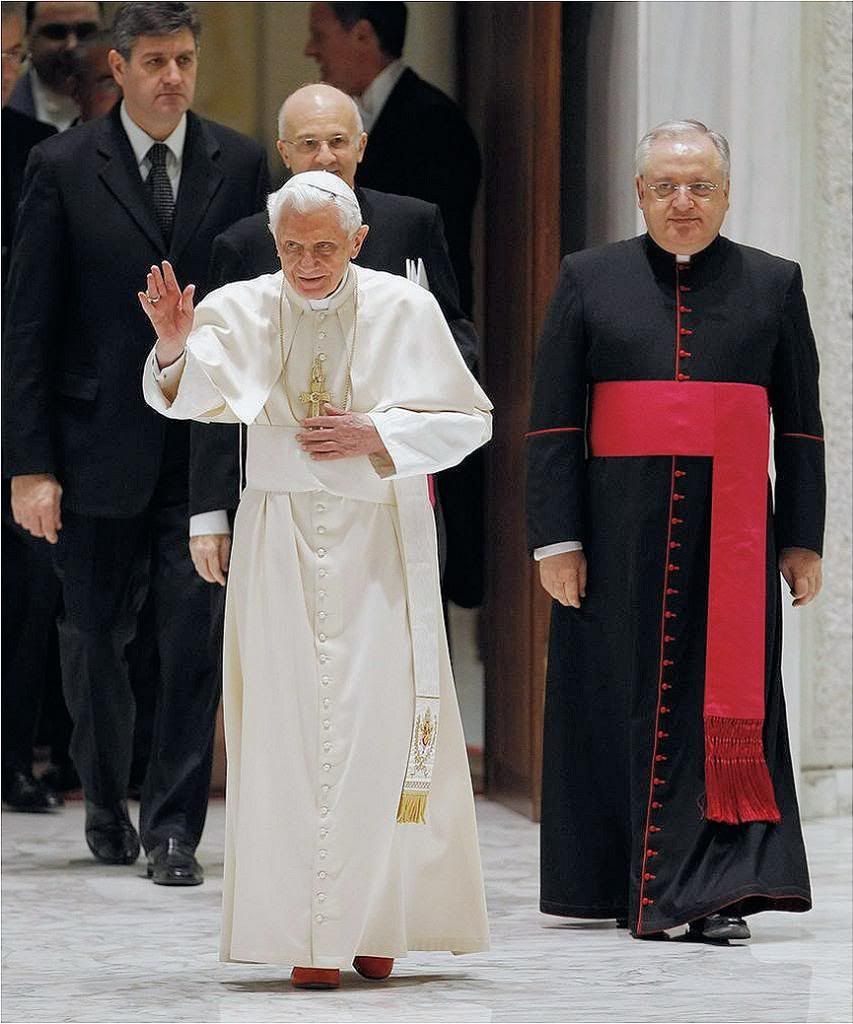
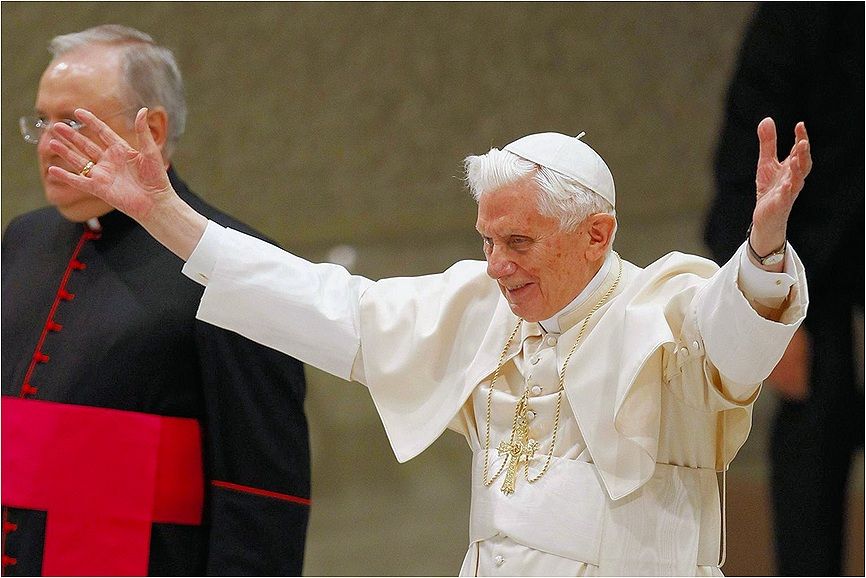
At his first General Audience for 2013, Pope Benedict XVI's catechesis reprised the premise with which he starts The Infancy Narratives: What is Jesus's origin?, as an approach to establishing the identity of Jesus Christ. In English, he said:
In this Christmas season, we rejoice in the light which surrounds Christ’s birth, bringing a hope which transforms our life in this world.
Each year our celebration leads us to reflect anew on Jesus's identity as the only-begotten Son of God, who became man for our salvation. Jesus is truly Emmanuel: "God among us", born of the Virgin Mary.
When we profess the mystery of the incarnation in the Creed, we bow our heads in awe and adoration. We acknowledge that the incarnation is the work of the three Persons of the Blessed Trinity, brought about through Mary’s free cooperation.
The incarnation is the beginning of the new creation. Conceived by the power of the Holy Spirit, Christ is the new Adam who offers humanity rebirth in the waters of Baptism, by which we become sons and daughters of our heavenly Father.
During this holy season, may we welcome the Saviour into our hearts, allow God’s power to strengthen and transform our weakness, and bear joyful witness to the dawning of the new creation.

Here is a translation of the Holy Father's catechesis today:
Dear brothers and sisters,
The Nativity of the Lord illuminates once more with its light the shadows that often envelop our world and our hearts, to bring hope and joy.
Where does this light come from? From the cave in Bethlehem where the shepherds found Mary and Joseph and the baby laid in a manger (Lk 2,16).
Another more profound question arises when we contemplate this Holy Family: How could that small and helpless Baby have brought such a radical novelty to the world that changed the course of history? Was there not something mysterious in his origin that went far beyond that cave?
Thus, the question on the origin of Jesus arises again and again - the same question that the Roman procurator Pontius Pilate asked during the trial of Jesus: "Where are you from?" (Jn 19,9).
And yet the origin of Jesus is quite clear. In the Gospel of John, when the Lord declares, "I am the bread descended from heaven", the Jews reacted, murmuring to themselves: “Is this not Jesus, the son of Joseph? Do we not know his father and mother? Then how can he say, ‘I have come down from heaven’?” (Jn 6,42).
Not long afterwards, the citizens of Jerusalem would forcefully protest against the alleged messianicity of Jesus, saying "We know where he is from. When the Messiah comes, no one will know where he is from” (Jn 7,27).
Jesus himself points out how inadequate is their alleged claim to know his origin, and thus he already offers an orientation for knowing where he comes from: "I did not come on my own, but the one who sent me, whom you do not know, is true" (Jn 7,28). Of course, Jesus came from Nazareth, he was born in Bethlehem, but what did they know of his true origin?
The answer to the question "Where did Jesus come from?" emerges clearly in all four Gospels: His true origin is God the Father - he comes totally from him but in a way that is unlike any prophet or messenger of God that preceded him.
This origin of the mystery of the God 'whom no one knows' is already found in the infancy accounts of Matthew and Luke what we have been reading during the Christmas season.
The angel Gabriel announces, “The holy Spirit will come upon you, and the power of the Most High will overshadow you. Therefore the child to be born will be called holy, the Son of God." (Lk 1,35).
We repeat these words everytime we recite the Credo, our profession of faith: «et incarnatus est de Spiritu Sancto, ex Maria Virgine» - through the Holy Spirit, he was incarnated in the womb of the Virgin Mary.
At these words, we kneel because the veil which had hidden God has been opened, so to speak, and his unfathomable and inaccessible mystery now touches us: God became Emmanuel, God-with-us.
When we hear the Masses composed by the great masters of sacred music - for example, Mozart's Coronation Mass - we immediately note how they dwell particularly on this phrase, almost as if they were seeking to express with the universal language of music what words cannot manifest: the great mystery of God who becomes incarnated and makes himself man.
If we consider the expression "conceived of the Holy Spirit, born of the Virgin Mary", we find that it has four subjects acting. The Holy Spirit and Mary are explicitly mentioned, but He - the Son - who became flesh in the womb of the Virgin, is implicit [as is his Father].
In the Nicean-Constantinopolitan version of our profession of faith, the Credo, Jesus is referred to by various appellatives: Lord, Christ, the only-begotten Son of God, God from God, Light from Light, true God from true God, consubstantial with the Father.
Thus we see that he is referred to another person, the Father. The first subject of the phrase is therefore the Father who, with the Son and the Holy Spirit, is the one God.
This statement in the Credo does not refer to God's eternal being, but rather speaks of an action in which the three divine Persons take part and which is realized ex Maria Vergine - through the Virgin Mary.
Without her, God's entry into the history of mankind would not have been achieved, and the central fact in our Profession of Faith would not have taken place, namely, God who became God-with-us.
Thus Mary belongs irrevocably to our faith in a God who acts and enters our history. She placed her whole being at God's disposition and accepted to become the place of God's dwelling.
Sometimes, during our journey and life of faith, we become aware of our poverty, of our inadequacy, in the face of the witness that we must bear to the world. But God chose a humble girl from an obscure village in one of the most remote provinces of the Roman Empire to give birth to his Son.
Always, even in the midst of the most arduous difficulties we face, we must trust in God, renewing our faith in his presence and action in our history, as in that of Mary. Nothing is impossible to God. With him, our existence always moves along secure ground and is open to a future of firm hope.
By professing in the Creed, "conceived of the Holy Spirit and born of the Virgin Mary", we affirm that the Holy Spirit, as the power of God Most High, achieved mysteriously in the Virgin Mary the conception of the Son of God.
The evangelist Luke reports the words of the archangel Gabriel: “The holy Spirit will come upon you, and the power of the Most High will overshadow you" (1,35).
Two Biblical references are evident: The first is to the moment of creation. At the start of the Book of Genesis, we read that "he Spirit of God moved over the waters" (1,2) - it is the Creator Spirit who has given life to all things and to the human being.
This happens to Mary, through the action of the same divine Spirit. It is a new creation: God who called being out of nothing, gives life to a new beginning for mankind with the Incarnation. The Fathers of the Church often spoke of Christ as the new Adam, to underscore the start of a new creation with the birth of the Son of God from the womb of the Virgin Mary.
This makes us reflect on how faith itself brings us a novelty so great that it results in our rebirth. Indeed, we begin our life as Christians with Baptism, which makes us reborn as children of God, and makes us take part in the filial relationship that Jesus has with the Father.
I would like to point out that Baptism is received - we are baptized - it is a passive action, because no one is capable of making oneself a child of God. It is a gift that is conferred freely.
St. Paul refers to this adoptive filiality of Christians in a central passage of his Letter to the Romans, where he writes: "Those who are led by the Spirit of God are children of God. For you did not receive a spirit of slavery to fall back into fear, but you received a spirit of adoption, through which we cry, 'Abba, Father!' The Spirit itself bears witness with our spirit that we are children of God" (8,14-16), not servants.
Only if we open ourselves to God's action, as Mary did, only if we entrust our life to the Lord as a friend in whom we have complete trust, only then shall our lives acquire new meaning and a new face: that of children of a Father who loves us and will never abandon us.
We spoke of two elements in the Annunciation - the first was of the Spirit moving over the waters, the Creator Spirit. There is another element in the words of the Annunciation.
The angel says to Mary: "The power of the Most High will overshadow you". It is a reference to the sacred cloud that, during the Exodus journey, posed over the tent of the Covenant, over the Ark of the Covenant that the people of Israel carried with them and which indicated the presence of God (cfr Ex 40,40,34-38).
Mary is thus the new sacred tent, the new Ark of the Covenant. With her Yes to the words of the Archangel, God received a dwelling in this world. He whose infinity the world cannot contain pitched his dwelling in the womb of a virgin.
Let us get back to the question with which we set out - that of the origin of Jesus, synthesized by Pilate's question, "Where are you from?" In our reflections, it is clear, from the very start of the Gospels, what the true origin of Jesus is: He is the only Son of the Father. He comes from God.
This is the great and overwhelming mystery that we celebrate at Christmastime: The Son of God, through the work of the Holy Spirit, was incarnated in the womb of the Virgin Mary.
This is the announcement that always sounds new, and which brings hope and joy to our hearts, because everytime, it gives us the certainty that even if we often feel weak, poor, incapable in the face of the difficulties and evils of the world, the power of God is always at work and produces wonders even in weakness. His grace is our strength (cfr 2 Cor 12,9-10). Thank you,
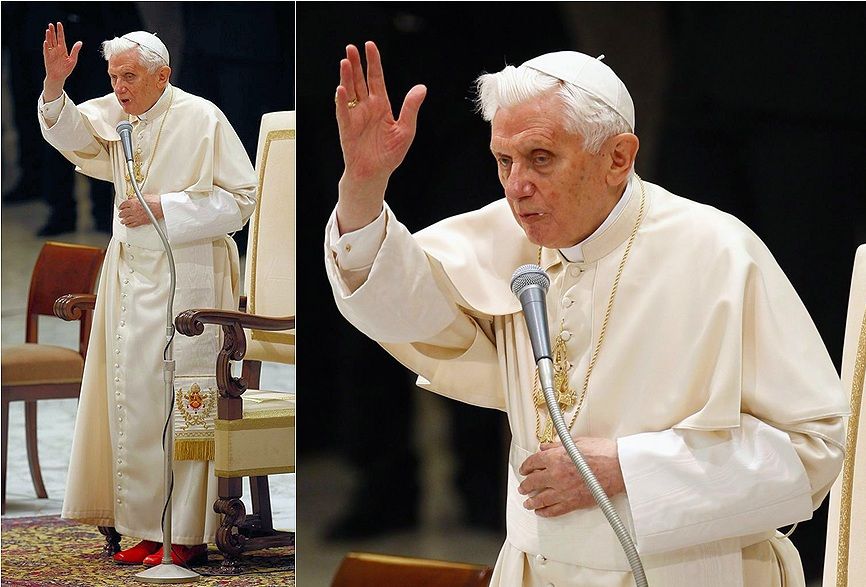
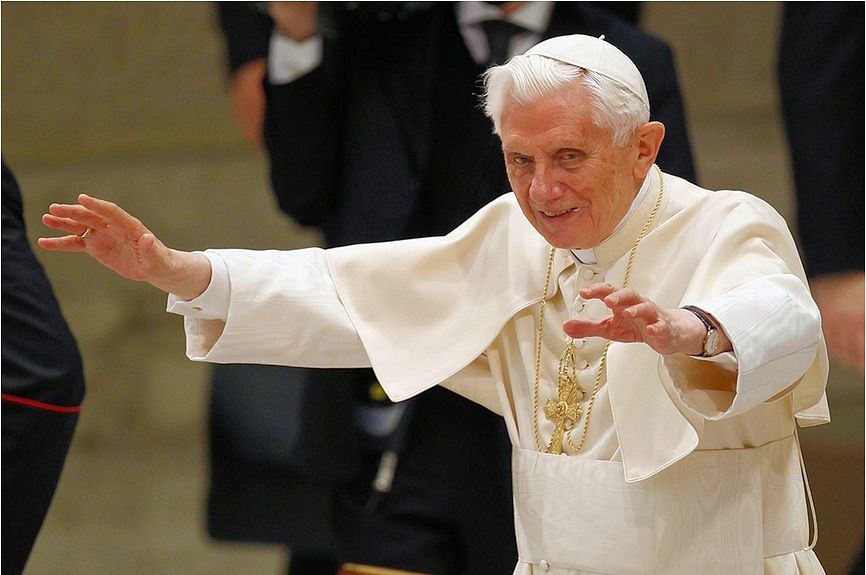

![[SM=g8115]](https://im0.freeforumzone.it/up/0/15/1119870.gif) ![[SM=g8115]](https://im0.freeforumzone.it/up/0/15/1119870.gif) ![[SM=g8115]](https://im0.freeforumzone.it/up/0/15/1119870.gif) ![[SM=g8115]](https://im0.freeforumzone.it/up/0/15/1119870.gif) ![[SM=g8115]](https://im0.freeforumzone.it/up/0/15/1119870.gif) ![[SM=g8115]](https://im0.freeforumzone.it/up/0/15/1119870.gif) ![[SM=g8115]](https://im0.freeforumzone.it/up/0/15/1119870.gif) ![[SM=g8115]](https://im0.freeforumzone.it/up/0/15/1119870.gif) ![[SM=g8115]](https://im0.freeforumzone.it/up/0/15/1119870.gif) ![[SM=g8115]](https://im0.freeforumzone.it/up/0/15/1119870.gif) ![[SM=g8115]](https://im0.freeforumzone.it/up/0/15/1119870.gif) ![[SM=g8115]](https://im0.freeforumzone.it/up/0/15/1119870.gif) On the necessary practice
On the necessary practice
of cropping pictures for publication
Pardon this digression!
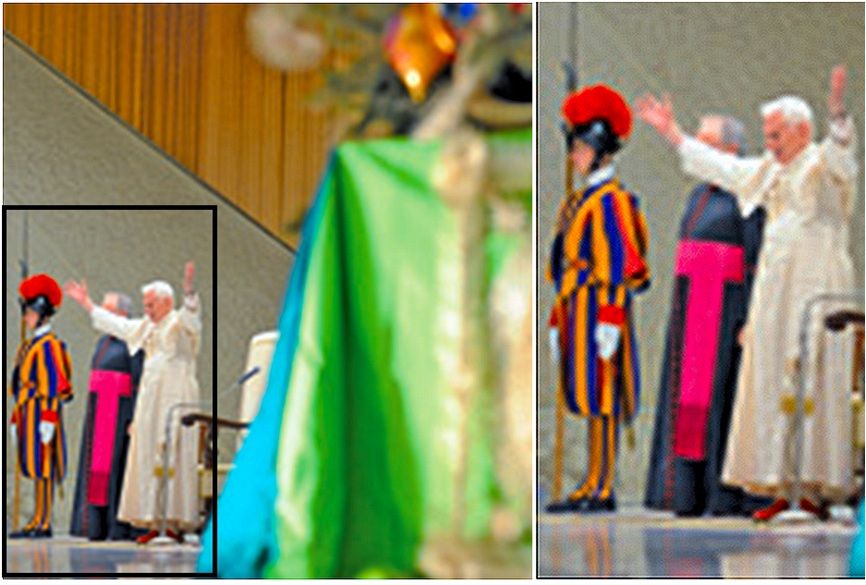 At left is a photo from today's GA used in the back page of tomorrow's issue of the OR (1/3/13), in which I have indicated with a black outline the only 'usable' part of the photo that conveys any meaningful visual information (I have enlarged it on the right).
In Photo-Editing 101 which is basic to any print editor, one of the skills that one learns to master right away is the art of 'cropping' a photograph, which has two main objectives: 1) to cut out any part of the photo (also called 'dead space') that does not contribute to the relevant information that the photo is supposed to convey; and 2) in the process, to maximize the size and visibility of the subject and the event you are illustrating. I routinely crop 80 percent of the newsphotos that I find online for precisely these two reasons.
At left is a photo from today's GA used in the back page of tomorrow's issue of the OR (1/3/13), in which I have indicated with a black outline the only 'usable' part of the photo that conveys any meaningful visual information (I have enlarged it on the right).
In Photo-Editing 101 which is basic to any print editor, one of the skills that one learns to master right away is the art of 'cropping' a photograph, which has two main objectives: 1) to cut out any part of the photo (also called 'dead space') that does not contribute to the relevant information that the photo is supposed to convey; and 2) in the process, to maximize the size and visibility of the subject and the event you are illustrating. I routinely crop 80 percent of the newsphotos that I find online for precisely these two reasons.
In this particular case, the area I would have cropped out contains no useful visual information at all - we are not interested in the wall and ceiling of the Aula Paolo VI stage, and we can't even make out what the large figure in right foreground is which dominates the photo. It looks like the back of some figure, probably from a Nativity scene next to the Christmas tree on stage. The fact that you can't even tell what it is simply underscores its utter irrelevance to the photo. The subject of the photograph is the Pope acknowledging the acclamation of the crowd. We know he is doing it from the stage of the Aula Paolo VI. The blank wall-and-ceiling portion, the chair and the undefined figure in the right foreground do not contribute an iota to that action, nor do they provide any 'artistic' frame to the Pope! - There is absolutely no reason to keep them in, especially since they take up almost three-fourths of the photograph! And yet this madness, which violates all common sense (not to mention photo editing rules), happens day in and day out in the pages of the Vatican newspaper, in addition to other habitual violations of Journalism 101. Doesn't editor Vian have any friends in journalism who can charitably call his attention to his very unprofessional shortcomings?
[Modificato da TERESA BENEDETTA 02/01/2013 23:08] |
| |
 03/01/2013 00:20 03/01/2013 00:20 |
|
| | | OFFLINE | | Post: 26.021
Post: 8.513 | Registrato il: 28/08/2005
Registrato il: 20/01/2009 | Administratore | Utente Master | |
|
 More than 2.3 million pilgrims
More than 2.3 million pilgrims
came to see the Pope in 2012
Translated from the 1/3/13 issue of

The Prefesture of the Pontifical Household has released figures indicative of attendance at the audiences and various public events of Benedict XVI in the Vatican and at Castel Gandolfo in 2012.
[One is glad to note the use of the adjective 'indicative', which avoids the implication given in previous years that the Household figures necessarily represent the comprehensive total of such attendance figures, when they only represent a low estimate based on the number of tickets actually given out. Yet is is a well=known fact that often twice as many pilgrims turn up for ticketed events than those that who have been given tickets - and unless the event is inside St. Peter's or one of the other papal basilicas, no one is turned away for lack of a ticket.]
Based on the requests for tickets alone to ticketed events (and police estimates for the Angelus gatherings), it is estimated that some 2,351,200 faithful took part in public events with the Pope, broken down as follows: 447,000 for 43 General Audiences; 146,000 at special audiences (for large groups on special occasions); 501,000 to liturgical celebrations; and some 1,356,000 at the Angelus prayers in St. Peter's Square and Castel Gandolfo.
The Pontifical Household estimates about 20,545,000 pilgrims who have attended papal events since Benedict XVI became Pope.
[That comes to an annual average of 2,651,000 every year in the past seven and three-fourth years. As impressive as the figure is, it represents a significant under=estimation, of course, not just because of the poor expedient of basing the numbers on tickets given, but because in past years, there were very glaring omissions.
To mention just a few: In 2011, the total attendance at the Pope's liturgies was estimated at 800,000, when for the beatification Mass of John Paul II alone, more than a million people came; or in 2009, when the 250,000 faithful mobilized by the Diocese of Rome to express support for the Pope after the disgraceful La Sapienza episode was not factored in - an omission repeated in 2010 for a similar attendance at the Angelus in support of the Pope after all the unmerited assaults connected with sex abuses by priests.
Since the Roman police are always present at the Pope's public events, I would hope that the Pontifical Household under Mons. Gaenswein will modify its attendance reporting henceforth by tallying both the tickets given for each event and the police estimate of the actual attendance, and to cite the police estimates for the Angelus assemblies. That would give a better overview of the attendance than the arbitrary method that has been used so far.
By way of comparison, using the same 'indicative' figures released yearly by the Pontifical Household, John Paul’s peak annual number in the 26 years of his Pontificate was reached in 1979, the first full year of his Pontificate – 1,585,000. Then the numbers decreased, and did not pick up again except in the Jubilee Year of 2000, when there were 1,400,000. Benedict XVI's peak year was 2006, also the first full year of his Pontificate, when the Household reported 3,300,000 attendees. Which does not necessarily mean that Benedict XVI is twice as popular with the faithful than the late Blessed Pope was, but that he is obviously not less popular at all.
Speaking as a vintage Benaddict, I think only those who have an axe to grind against Joseph Ratzinger would not find him eminently admirable and lovable, very much worth 'visiting' when one is in Rome.
 |
| |
|
|
|
|